Yes | ||
| Allmusic Biography : Far and away the longest-lasting and most successful of the 70s progressive rock groups, Yes proved to be one of the lingering success stories from that musical genre despite almost constant personnel changes. The band, founded in 1968, overcame a generational shift in its audience and the departure of its most visible members at key points in its history to reach the end of the century as the definitive progressive rock band. Their audience remained huge because they had always attracted younger listeners drawn to their mix of daunting virtuosity, cosmic (often mystical) lyrics, complex musical textures, and powerful yet delicate lead vocals. Fourteen of their albums have charted in the Top 200 in the U.S. (including seven Top Tens), while another ten have landed in the U.K. Top 50. Music fans followed Yes from their progressive classics such as The Yes Album and Fragile to the big-beat new wave pop modernism of 90125 and Big Generator. Each new live recording -- from 1986s Keys to Ascension through 2017s Progeny: Seven Shows from Seventy-Two -- has sold out of its initial pressing quickly. Their singles charted consistently from the 70s through the early 90s. Seven of their albums have been certified platinum or multi-platinum, with another four being certified gold. The 21st century lineup remains a major concert draw across the globe and records periodically. Founding lead singer Jon Anderson started out during the British beat boom as a member of the Warriors, who recorded a single for Decca in 1964; he later joined the band Gun before going solo in 1967 with two singles on the Parlophone label. He was making a meager living cleaning up at a London club called La Chasse during June of 1968, and was thinking of starting up a new band. One day at the bar, he chanced to meet bassist/vocalist Chris Squire, a former member of the band the Syn, who had recorded for Deram, the progressive division of Decca. The two learned that they shared several musical interests, including an appreciation for the harmony singing of Paul Simon and Art Garfunkel, and within a matter of days, they were trying to write songs together. They began developing the beginnings of a sound that incorporated harmonies with a solid rock backing, rooted in Squires very precise approach to the bass. Anderson and Squire saw the groups around them as having either strong vocals and weak instrumental backup, or powerful backup and weak lead vocals, and they sought to combine the best of both. Their initial inspiration, at least as far as the precision of their vocals, according to Squire, was the pop/soul act the Fifth Dimension. They recruited Tony Kaye, formerly of the Federals, on keyboards; Peter Banks, previously a member of the Syn, on guitar; and drummer Bill Bruford, who had only just joined the blues band Savoy Brown a few weeks earlier. The name Yes was chosen for the band as something short, direct, and memorable. The groups break came in October of 1968 when the band, on the recommendation of the Nices manager, Tony Stratton-Smith (later the founder of Charisma Records), played a gig at the Speakeasy Club in London, filling in for an absent Sly & the Family Stone. The group was later selected to open for Creams November 26, 1968 farewell concert at Royal Albert Hall. This concert, in turn, led to a residency at Londons Marquee Club and their first radio appearance, on John Peels Top Gear radio show. They subsequently opened for Janis Joplin at her Royal Albert Hall concert in April 1969, and were signed to Atlantic Records soon after. Their debut single, and Anderson and Squires first song, entitled "Sweetness," was released soon after. Their first album, Yes, was released in November of 1969. The record displayed the basic sound that would characterize the bands subsequent records, including impeccable high harmonies, clearly defined, emphatic playing, and an approach to music that derived from folk and classical far more than the R&B; from which most rock music sprung -- but it was much more in a pop music context, featuring covers of Beatles and Byrds songs. Also present was a hint of the space rock sound (on "Beyond and Before") in which they would later come to specialize. Andersons falsetto lead vocals gave the music an ethereal quality, while Banks angular guitar, seemingly all picked and none strummed, drew from folk and skiffle elements. Squires bass had a huge sound, owing to his playing with a pick, giving him one of the most distinctive sounds on the instrument this side of the Whos John Entwistle, while Brufords drumming was very complex within the pop song context, and Kayes playing was rich and melodic. In February of 1970, Yes supported the Nice at their Royal Albert Hall show, while they were preparing their second album, Time and a Word. By the time it was released in June of 1970, Peter Banks had left the line-up, to be replaced by guitarist Steve Howe, a former member of the Syndicats, the In Crowd, Tomorrow ("My White Bicycle"), and Bodast. Howe is pictured with the group on the jacket of Time and a Word, which was released in August, and played his first show with the group at Queen Elizabeth Hall on March 21, 1970, but Banks actually played on the album. This record was far more sophisticated than its predecessor, and even included an overdubbed orchestra on some songs, the only time that Yes would rely on outside musicians to augment their sound. The cosmic and mystical elements of their songwriting were even more evident on this album. The groups fame in England continued to rise as they became an increasingly popular concert attraction, especially after they were seen by millions as the opening act for Iron Butterfly. It was with the release of The Yes Album in April of 1971 that the public began to glimpse the groups full potential. That record, made up entirely of original compositions, was filled with complex, multi-part harmonies; loud, heavily layered guitar and bass parts; beautiful and melodic drum parts; and surging organ (with piano embellishments) passages bridging them all. Everybody was working on a far more expansive level than on any of their previous recordings: on "Your Move" (which became the groups first U.S. chart entry, at number 40), the harmonies were woven together in layers and patterns that were dazzling in their own right, while "Starship Trooper" and "All Good People" gave Howe, Squire, and Bruford the opportunity to play extended instrumental passages of tremendous forcefulness. The Yes Album opened a new phase in the groups history and its approach to music. It was built on compositions that resembled sound paintings rather than songs; the swelling presence of Kayes Moog synthesizer and organ, Howes fluid yet stinging guitar passages, Squires rippling bass, and Andersons haunting falsetto leads all evoked sonic landscapes that were strangely compelling to the imagination of the listener. The Yes Album reached number seven in England; later, it got to number 40 in America. Early in 1971, Yes made their first U.S. tour opening for Jethro Tull, and they were back late in the year sharing billing with Ten Years After, and the J. Geils Band. The bandmembers began work on their next album, but were interrupted when keyboard player Tony Kaye quit in August of 1971 to join ex-Yes guitarist Peter Banks in the group Flash. He was replaced by former Strawbs keyboard player Rick Wakeman, who played his first shows with the band in September and October of 1971. Wakeman was a far more flamboyant musician than Kaye, not only in his approach to playing, but in the number of instruments that he used. In place of the three keyboards that Kaye used, Wakeman used an entire bank of upwards of a dozen instruments, including Mellotron, various synthesizers, organ, two or more pianos, and electric harpsichord. This line-up, Anderson, Squire, Howe, Wakeman, and Bruford, which actually only lasted for one year, from August of 1971 until August of 1972, is generally considered the best of all the Yes configurations, and the strongest incarnation of the band. The group completed its next album, Fragile, in less than two months, partly out of a need to get a new album out to help pay for all of Wakemans equipment. And partly due to this haste, the new album featured only four tracks by the group as a whole, "Roundabout," "The South Side of the Sky," "Heart of the Sunrise," and "Long Distance Runaround" -- although, significantly, all except "Long Distance Runaround" ran between seven and 13 minutes -- and was rounded out by five pieces showcasing each member of the band individually. Released in December of 1971, Fragile reached number seven in England and number four in America. The albums success was enhanced by the release of an edited single of "Roundabout," the groups first major hit, which reached number 13 on the U.S. chart. "Roundabout," with its crisp interwoven acoustic and electric guitar parts and very vivid bass textures, exquisite vocals, swirling keyboard passages, and brisk beat, proved an ideal introduction to the groups sound. The singles impact among teenage and college-age listeners was far greater than this chart position would indicate; they simply flocked to the band. Even the albums jacket, designed by artist Roger Dean, featured distinctive, surreal landscape graphics, which evoked images seemingly related to the music inside. These paintings would become part and parcel of the audiences impression of Yes music, and later tours by the group would feature stage sets designed by Dean as an integral part of the shows. Although they would continue to release 45s periodically, including a cover of Paul Simons "America," Yes future clearly lay with their albums. Close to the Edge, recorded in the late spring of 1972 and released in September of that year, showed just where they were headed, consisting of only three long tracks, essentially three sound paintings, in which the overall sound and musical textures mattered more than the lyrics or any specific melody, harmonization, or solo. The fans and critics alike loved Close to the Edge, resplendent in its rich harmonies and keyboard passages of astonishing beauty and complexity, brittle but powerful guitar, and drumming that was gorgeous in its own right. The album reached number four in England and number three in the United States without help from a hit single, though an edited version of "And You and I" did reach number 42 in America. By the time of the records release, however, Bill Bruford had left the band to join King Crimson, and was replaced by Alan White, a session drummer who was previously best known for having played with John Lennon and Yoko Onos Plastic Ono Band. With White -- who was a powerful player, but lacked the subtle melodic technique of Bill Bruford -- installed at the drum kit, the group went on tour behind the new album to massive audience response and critical acclaim. As an added bonus for fans, Rick Wakeman had completed his first solo LP, the instrumental concept album The Six Wives of Henry VIII, which was released in February of 1973. A large part of the Close to the Edge tour, like the groups prior tour with Bruford on the drums, was recorded, and a three-LP set entitled Yessongs, released in May of 1973, was assembled from the best work on the tour. Yessongs became a model for progressive rock live albums; at over 120 minutes, it included the bands entire stage repertoire (not coincidentally, the best songs from the three preceding albums), all of it uncut and well played. The live album reached number seven in England and number 12 in the United States. The group spent the second half of 1973 trying to come up with a follow-up to four successive hit albums. The resulting record, a double-LP titled Tales from Topographic Oceans, was released in January of 1974 with such high expectations that it earned a gold record from its advanced orders alone. The album broke all previous artistic boundaries, consisting of four long tracks each taking up the full side of an LP. If the groups prior albums were made up of paintings in sound, then Topographic Oceans was a series of sonic murals, painted across vast spaces on a massive scale that did not make for light listening. The group members believed they had cultivated an audience for such music, and they were right; Topographic Oceans not only topped the British chart but reached number six on the American chart. No album has more divided both fans and critics alike. At the time of its release, critics called Tales from Topographic Oceans excessive, representing the height of progressive rocks self-indulgent nature. Originally inspired by Jon Andersons reaction to a set of Shastric scriptures, the album displayed a sublime beauty in many parts, and immense, mesmerizing stretches of high-energy virtuosity for most of its length. The group toured behind Topographic Oceans early in 1974, performing most of the album on-stage. Following this tour, plans were announced for each member of the group to release a solo album of his own. At this point, the group faced another major line-up change as Wakeman -- whose second solo album, Journey to the Centre of the Earth, appeared in May of 1974 -- announced that he was leaving Yes line-up in June to pursue a solo career. In fact, as he revealed in interviews many years later, hed been very unhappy with the content of Tales from Topographic Oceans, feeling that its music no longer reflected the direction he wanted to go in and that it was time to part company with the band. Wakemans decision created a major problem for Yes, for the keyboard player had become a star within their ranks, and was the groups most well-known individual member; people definitely paid to see and hear his keyboards rippling amidst the bands sound. In August of 1974, it was announced that Patrick Moraz, formerly of the progressive rock trio Refugee, had replaced Wakeman. Three months later, the groups new album, Relayer, was released, reaching the British number four spot and the American number five position. Moraz proved an adequate replacement for Wakeman, but lacked his predecessors gift for showmanship and extravagance. The group toured in the wake of Relayers release in November of 1974, but didnt record together again for two and a half years. Indeed, in order to satisfy the demand for more Yes material in the absence of a new album while the group was on the road, Atlantic in March of 1975 released a collection of their early music entitled Yesterdays, drawn from the first two albums and various singles, which rose to number 27 in England and number 17 in America. A film that the group had made along their 1973 tour, entitled Yessongs, was released to theaters at around the same time. The movie received poor reviews, possibly owing to the fact that most reviewers were unfamiliar with the groups music, but it was profitable and has been popular for years on home video. In November of 1975, Chris Squires Fish Out of Water and Steve Howes Beginnings were both released and climbed into the mid-sixties on the American charts. Squires record was clearly the more accomplished of the two, virtually a lost Yes album, with the bassist exploring new instrumental and orchestral textures, and turning in a credible vocal performance as well. Howes record was an interesting, low-key effort that might have impressed other guitarists, but was sorely lacking in the songwriting department. These were followed in March of 1976 by Alan Whites Ramshackled, which placed at number 41 in England, and Morazs solo venture Patrick Moraz, which reached number 28 in England and number 132 in America. And in July of 1976, Jon Andersons Olias of Sunhillow, a dazzling, Tolkien-esque science fiction/fantasy epic (with packaging on the original LP that must have doubled the basic production cost of the jacket) that sounded as much like a Yes album as any record not made by the entire band could, reached number eight in England and number 47 in America. Amid all of these solo projects, the groups lineup changed once again, as Wakeman announced his return to the fold in late 1976, while Moraz exited. Wakemans original plan was to assist Yes in the studio on their new album, but the sessions proved so productive that he made the decision, fully supported by the band, to return to the lineup permanently. The groups next album, Going for the One, released in August of 1977, represented a much more austere, basic style of rock music, built around shorter songs. The long-player topped the British chart for two weeks and reached number eight on the American chart, while the singles "Wonderous Stories" and "Going for the One" rose to numbers seven and 24, respectively, in the U.K. Yes embarked on a massive tour shortly after the albums release, including their most successful American appearances ever, playing to record audiences on the East Coast. Tormato, released nearly a year later, made the Top Ten in both England and America in the fall of 1978. Once again, after finishing the tour behind the album, the group members began working on solo projects. The year 1979 saw the release of The Steve Howe Album, while early in 1980 Jon Anderson hooked up with Greek keyboard player Vangelis. The two released an album, Short Stories, and an accompanying single, "I Hear You," early in 1980, both of which reached the British Top Ten. Jon & Vangelis, as the team became known, went on to cut several more records together. In March of 1980, Yes lineup collapsed, as Wakeman and then Anderson walked out after an unsuccessful attempt to start work on a new album. Two months later, Trevor Horn (vocals, guitar) and Geoffrey Downes (keyboards), formerly of the British band the Buggles, joined the Yes lineup of Steve Howe, Chris Squire, and Alan White. This configuration recorded a new album, Drama, which was released in August of 1980; rather ominously, this record did dramatically better in England, reaching the number two spot, than it did in America, where it got no higher than number 18. This hybrid lineup lasted for a year, but the old Yes incarnation remained much closer to the hearts of fans; in January of 1981 Atlantic Records released Yesshows, a double live album made up of stage performances dating from 1976 through 1978 that reached number 22 in England and number 43 in America. Finally, in April of 1981, the breakup of Yes was announced. Geoff Downes formed Asia with Steve Howe, which went on to some considerable if short-lived success in the early 80s, and the rest of the band scattered to different projects. For a year and a half, the group seemed a dead issue, until Chris Squire and Alan White announced the formation of a new group called Cinema, with original Yes keyboard player Tony Kaye and South African guitarist Trevor Rabin. This band proved unsatisfactory, and Squire invited Jon Anderson to join. It was just about then that everyone realized that theyd virtually re-formed the core of the Yes lineup, and that they should simply revive the name. In late 1983, this Yes lineup, with guitarist/vocalist Trevor Horn serving as producer, released an unexpected chart-topping hit single (number one in the U.S. in January of 1984) in "Owner of a Lonely Heart," displaying a stripped-down modern dance-rock sound unlike anything the group had ever produced before. The remaining group released a successful dance-rock style album, 90125, under Horns guidance, which sold well but also proved a dead end, with no follow-up, when Horn chose not to remain with the group. Yes was invisible for nearly two years after that, until the late 1987 release of Big Generator, which performed only moderately well. Meanwhile, in 1986, Steve Howe reappeared as a member of the quintet GTR, whose self-titled album reached number 11 in America. The proliferation of ex-Yes members gathering together in various combinations led to an ongoing legal dispute over who owned the group name, which came to a head in 1989. Luckily for four of them, the name Anderson Bruford Wakeman Howe was recognizable enough to reach the fans, which sent the resulting album into the U.S. Top 40 and the British Top 20, more or less handing them a victory by acclamation (later supported by the settlement) in their dispute over the name. By touring with An Evening of Yes Music, they presented their classic repertoire to sold-out houses all over the country, including a 1990 gig at Madison Square Garden. The legal squabbles had all been settled by the spring of 1991, at which time a composite "mega Yes" group consisting of Anderson, Howe, Wakeman, Squire, Kaye, White, Rabin, and Bruford (all of the key past members except Peter Banks) embarked on a blow-out world tour called Yesshows in 1991. The accompanying album, Union, which displayed a somewhat tougher sound than theyd been known for, debuted on the British chart at number seven and reached number 15 in America. This tour, which allowed the band to showcase music from all of its previous incarnations and, in the second half of the show, featured each member who wished it in a solo spot, broke more records. These mammoth three-hour shows and the resulting publicity only seemed to heighten interest in the four-CD box set YesYears, which was released by Atlantic in 1991. The rest of the 1990s proved every bit as busy for members of the group as the 80s had been, if not always in a group context. Bill Bruford and Steve Howe, in conjunction with producer Alan Parsons and arranger David Palmer, successfully spun off the groups classic music on a mostly instrumental project called Symphonic Music of Yes, released on RCA, which presented many of the best-known Yes songs in an orchestral setting (with Jon Anderson furnishing vocals in two places). Trevor Rabin reunited with Anderson, White, Kaye, and Squire in 1994 for the Talk album, which sold poorly despite a national tour and the presence of a killer single in "The Calling." Kaye left the music business for more than a decade following that tour, which saw guitarist Billy Sherwood, a longtime friend of Squires and an ex-member of World Trade, join as a new official member of the band. It was also around this time that the first round of upgraded reissues of the groups catalog appeared on CD from Atlantic Records. In 1995, the classic lineup of Anderson, Howe, Squire, Wakeman, and White reunited for a short series of performances, which yielded several live recordings as well as a pair of new studio albums soon after, Keys to Ascension and Keys to Ascension 2, but the reunion was interrupted by Wakemans departure, in a dispute over the treatment of the new studio material. Sherwood eventually took over on keyboards, in addition to his guitar duties. He and Squire became key members of the latter-day Yes lineup, their work in their own band Conspiracy serving as the core of what became the Yes album Open Your Eyes. By this time, Yes had taken on two distinct incarnations, on-stage and in the studio. With Trevor Rabin having opted out of the group after 1995 in favor of work as a film composer, Steve Howe returned to the concert stage as a member, his work a highlight of their shows, while in the studio it was Sherwood and Squire, along with Anderson, at the creative center of the group. And another new member was added following the tour for Open Your Eyes (which was mostly devoted to reviving their 70s repertoire), in Igor Khoroshev. The groups lineup went through further changes amid a plethora of live recordings, released as both CDs and DVDs, in the early 21st century. Sherwood was dismissed in 2000, and Khoroshev was gone after the tour that year. Magnification saw the band working with a full orchestra, which proved something of a disappointment to many fans -- Yes had never really worked well with that sort of accompaniment, on those rare occasions when they tried it in the past, and not even state-of-the-art digital technology could help. Wakeman was back for the groups 2002 international tour, and Yes toured again two years later, to commemorate their 35th anniversary. All of these performances and new recordings coincided with a massive amount of activity surrounding the groups catalog. A second, more expansive career-retrospective five-disc box set, In a Word: Yes, was released in 2002, and around this same time Japanese WEA reissued the entire Yes catalog in audiophile-quality remastered editions, packaged in handsome miniature LP sleeves that re-created all of the Roger Dean-designed jackets in perfect detail, inside and out. Not to be outdone, Rhino Records in the U.S. issued their own remastered editions of the same catalog in slipcased editions, with the added virtues of extensive bonus tracks and annotation and, in the case of Tales from Topographic Oceans, a remixed master as well. Yes, by now carrying so many permutations to their lineup and sound, had transcended their progressive rock origins. Trevor Rabin returned to the fold alongside Howe -- along with Geoff Downes -- for one night, in a performance honoring Trevor Horn at the 2004 Princes Trust concert. The group then became officially inactive, though Rhino did release a third box set, entitled The Word Is Live, in 2005, to decidedly lackluster reviews -- mostly the set was made up of secondary material performed by lesser later lineups, though its first disc, part of which showcased the Peter Banks/Tony Kaye period, was worth hearing. Kaye, Sherwood, and White reunited in a new context -- using the group name CIRCA: -- in 2006, with an album released the following year. By 2010, a core group made up of Howe, Squire, Downes, and White began recording the 21st studio album from the band, the Trevor Horn-produced Fly from Here. Released in June of 2011, it included Canadian singer Benoit David, who had performed in a Yes tribute band, on lead vocals. Early the next year, while on tour, David was replaced by Jon Davison from a Tennessee-based, latter-day prog band known as Glass Hammer. Yes continued to tour during the next few years, and re-entered the studio in early 2014 with Davison in tow. The sessions, produced by Roy Thomas Baker, appeared that July with the title Heaven & Earth. In June of the following year, after bassist Chris Squire -- a pivotal contributor to the Yes sound -- was treated for leukemia in Phoenix, Arizona, it was announced that he had died at the age of 67. In 2016, the band went on a tour of North America, and the following year released Topographic Drama: Live Across America, which captured many of the performances of the shows. Two years later, Rhino issued Yes: The Steven Wilson Remixes, a vinyl-only box set of the five albums he remixed at the bands request over the previous four years. Included were The Yes Album (1971), Fragile (1971), Close to the Edge (1972), Tales from Topographic Oceans (1973), and Relayer (1974). | ||
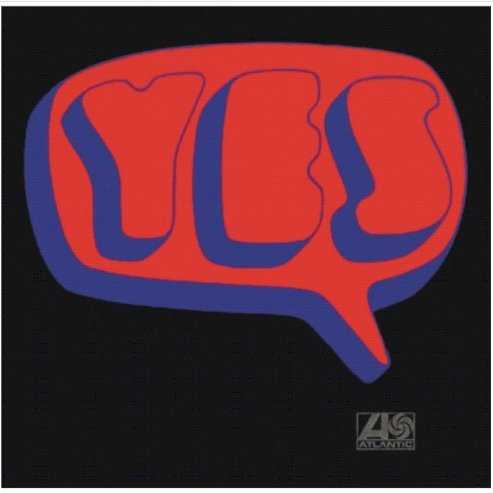 | Album: 1 of 47 Title: Yes Released: 1969-07-25 Tracks: 8 Duration: 41:06 Scroll: Up Down Top Bottom 25% 50% 75% Spotify Allmusic Wikipedia AlbumCover | 1 Beyond and Before (04:55) 2 I See You (06:52) 3 Yesterday and Today (02:51) 4 Looking Around (04:02) 5 Harold Land (05:45) 6 Every Little Thing (05:45) 7 Sweetness (04:35) 8 Survival (06:17) |
| Yes : Allmusic album Review : Yes debut album is surprisingly strong, given the inexperience of all those involved at the time. In an era when psychedelic meanderings were the order of the day, Yes delivered a surprisingly focused and exciting record that covered lots of bases (perhaps too many) in presenting their sound. The album opens boldly, with the fervor of a metal band of the era playing full tilt on "Beyond and Before," but it is with the second number, a cover of the Byrds "I See You," that they show some of their real range. The song is highlighted by an extraordinary jazz workout from lead guitarist Peter Banks and drummer Bill Bruford that runs circles around the original by Roger McGuinn and company. "Harold Land" was the first song on which Chris Squires bass playing could be heard in anything resembling the prominence it would eventually assume in their sound and anticipates in its structure the multi-part suites the group would later record, with its extended introduction and its myriad shifts in texture, timbre, and volume. And then there is "Every Little Thing," the most daring Beatles cover ever to appear on an English record, with an apocalyptic introduction and extraordinary shifts in tempo and dynamics, Banks guitar and Brufords drums so animated that they seem to be playing several songs at once. This song also hosts an astonishingly charismatic performance by Jon Anderson. There were numerous problems in recording this album, owing to the inexperience of the group, the producer, and the engineer, in addition to the unusual nature of their sound. Many of the numbers give unusual prominence to the guitar and drums, thus making it the most uncharacteristic of all the groups albums. | ||
 | Album: 2 of 47 Title: Time and a Word Released: 1970-07-24 Tracks: 12 Duration: 59:57 Scroll: Up Down Top Bottom 25% 50% 75% Spotify Allmusic Wikipedia AlbumCover | 1 No Opportunity Necessary, No Experience Needed (04:50) 2 Then (05:47) 3 Everydays (06:09) 4 Sweet Dreams (03:52) 5 The Prophet (06:37) 6 Clear Days (02:07) 7 Astral Traveller (05:56) 8 Time and a Word (04:39) 9 Dear Father (04:14) 10 No Opportunity Necessary, No Experience Needed (original mix) (04:46) 11 Sweet Dreams (original mix) (04:20) 12 The Prophet (single version) (06:33) |
| Time and a Word : Allmusic album Review : Yes second (and least successful) album was a transitional effort; the group trying for a more produced and sophisticated sound through the use of an orchestra. Even so, the results werent conventional, because the group didnt tone down or turn down its sound. Much of Time and a Word relies on bold, highly animated performances by Bill Bruford, Chris Squire, and Tony Kaye. Additionally, by this time the group was developing a much tauter ensemble than was evident on their first LP, so theres no lack of visceral excitement. "No Opportunity Necessary, No Experience Needed" was a bold opening, a highly amplified, frenzied adaptation of the Richie Havens song, melded with Jerome Moross title music from the movie The Big Country. Somewhat more successful musically is "Then," which keeps the orchestral accompaniment to a minimum and allows Kaye and Banks to stretch out on organ and guitar. "Everydays" is highlighted by Andersons ethereal vocals and Kayes dueting with the orchestra. A surprising amount of the material here seems rather tuneless, but the group was solidifying its sound and, in the process, forcing Banks out of the lineup, despite some beautiful moments for him (and Tony Kaye) on the prettiest parts of "The Prophet," a piece that also contains fragments of music that anticipate Yes work right up through Tales from Topographic Oceans. "Astral Traveller," as a title, anticipates the themes of future group work, though they still dont have the dexterity to pull off the tempo changes theyre trying for. By the time the record was completed, Banks was out of the band, which is why Steve Howe, his successor, ended up pictured on the cover of most editions. | ||
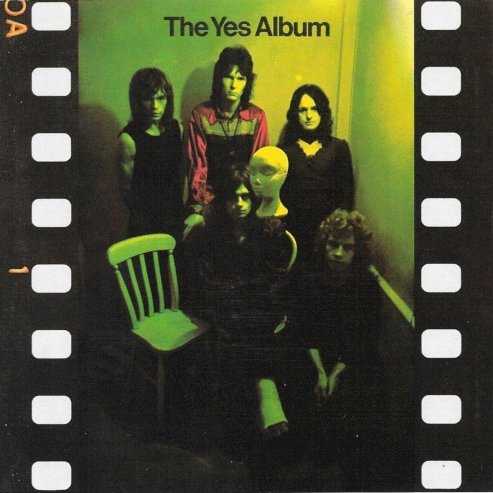 | Album: 3 of 47 Title: The Yes Album Released: 1971-01-29 Tracks: 6 Duration: 41:43 Scroll: Up Down Top Bottom 25% 50% 75% Spotify TrackSamples Wikipedia Allmusic AlbumCover | 1 Yours Is No Disgrace (09:41) 2 The Clap (03:17) 3 Starship Trooper: a. Life Seeker / b. Disillusion / c. Würm (09:33) 4 I’ve Seen All Good People: a. Your Move / b. All Good People (06:56) 5 A Venture (03:18) 6 Perpetual Change (08:55) |
| The Yes Album : Allmusic album Review : On Yes first two albums, Yes (1969) and Time and a Word (1970), the quintet was mostly searching for a sound on which they could build, losing one of their original members -- guitarist Peter Banks -- in the process. Their third time out proved the charm -- The Yes Album constituted a de facto second debut, introducing the sound that would carry them forward across the next decade or more. Gone are any covers of outside material, the group now working off of its own music from the ground up. A lot of the new material was actually simpler -- in linear structure, at least -- than some of what had appeared on their previous albums, but the internal dynamics of their playing had also altered radically, and much of the empty space that had been present in their earlier recordings was also filled up here -- suddenly, between new member Steve Howes odd mix of country- and folk-based progressive guitar and the suddenly liberated bass work and drumming of Chris Squire and Bill Bruford, respectively, the groups music became extremely busy. And lead singer Jon Anderson, supported by Squire and Howe, filled whatever was left almost to overflowing. Andersons soaring falsetto and the accompanying harmonies, attached to haunting melodies drawn from folk tunes as often as rock, applied to words seemingly derived from science fiction, and all delivered with the bravura of an operatic performance -- by the band as well as the singer -- proved a compelling mix. Whats more, despite the busy-ness of their new sound, the group wasnt afraid to prove that less could sometimes be more: three of the high points were the acoustic-driven "Your Move" and "The Clap" (a superb showcase for Howe on solo acoustic guitar), and the relatively low-key "A Venture" (oddly enough, the latter was the one cut here that didnt last in the groups repertory; most of the rest, despite the competition from their subsequent work, remained in their concert set for years to come). The Yes Album did what it had to do, outselling the groups first two long-players and making the group an established presence in America where, for the first time, they began getting regular exposure on FM radio. Sad to say, the only aspect of The Yes Album that didnt last much longer was Tony Kaye on keyboards: his Hammond organ holds its own in the groups newly energized sound, and is augmented by piano and other instruments when needed, but he resisted the idea of adding the Moog synthesizer, that hot instrument of the moment, to his repertory. The band was looking for a bolder sound than the Hammond could generate, and after some initial rehearsals of material that ended up on their next album, he was dropped from the lineup, to be replaced by Rick Wakeman. | ||
 | Album: 4 of 47 Title: Fragile Released: 1971-11-12 Tracks: 9 Duration: 41:10 Scroll: Up Down Top Bottom 25% 50% 75% Spotify TrackSamples Wikipedia Allmusic AlbumCover | 1 Roundabout (08:34) 2 Cans and Brahms (extracts from Brahms’ 4th Symphony in E Minor, Third Movement) (01:42) 3 We Have Heaven (01:39) 4 South Side of the Sky (07:56) 5 Five Per Cent for Nothing (00:37) 6 Long Distance Runaround (03:30) 7 The Fish (Schindleria Praematurus) (02:42) 8 Mood for a Day (03:02) 9 Heart of the Sunrise / We Have Heaven (reprise) (11:24) |
| Fragile : Allmusic album Review : Fragile was Yes breakthrough album, propelling them in a matter of weeks from a cult act to an international phenomenon; not coincidentally, it also marked the point where all of the elements of the music (and more) that would define their success for more than a decade fell into place fully formed. The science-fiction and fantasy elements that had driven the more successful songs on their preceding record, The Yes Album, were pushed much harder here, and not just in the music but in the packaging of the album: the Roger Dean-designed cover was itself a fascinating creation that seemed to relate to the music and drew the purchasers attention in a manner that few records since the heyday of the psychedelic era could match. Having thrown original keyboard player Tony Kaye overboard early in the sessions -- principally over his refusal to accept the need for the Moog synthesizer in lieu of his preferred Hammond organ -- the band welcomed Rick Wakeman into its ranks. His use of the Moog, among other instruments, coupled with an overall bolder and more aggressive style of playing, opened the way for a harder, hotter sound by the group as a whole; bassist Chris Squire sounds like hes got his amp turned up to "12," and Steve Howes electric guitars are not far behind, although the group also displayed subtlety where it was needed. The opening minute of "Roundabout," the album opener -- and the basis for the edited single that would reach number 13 on the Billboard charts and get the group onto AM radio in a way that most other prog rock outfits could only look upon with envy -- was dominated by Howes acoustic guitar and Bill Brufords drums, and only in the middle section did the band show some of what they could do with serious amperage. Elsewhere on the record, as on "South Side of the Sky," they would sound as though they were ready to leave the ground (and the planet), between the volume and intensity of their playing. "Long Distance Runaround," which also served as the B-side of the single, was probably the most accessible track here apart from "Roundabout," but they were both ambitious enough to carry most listeners on to the heavier sides at the core of this long-player. The solo tracks by the members were actually a necessity: they needed to get Fragile out in a hurry to cover the cost of the keyboards that Wakeman had added to the groups sonic arsenal. But they ended up being more than filler. Each member, in effect, took a "bow" in mostly fairly serious settings, and Squires "The Fish" and Howes "Mood for a Day" pointed directly to future, more substantial projects as well as taking on a life of their own on-stage. If not exactly their peak, Fragile was as perfect a record as the group would ever make, and just as flawless in its timing as its content. | ||
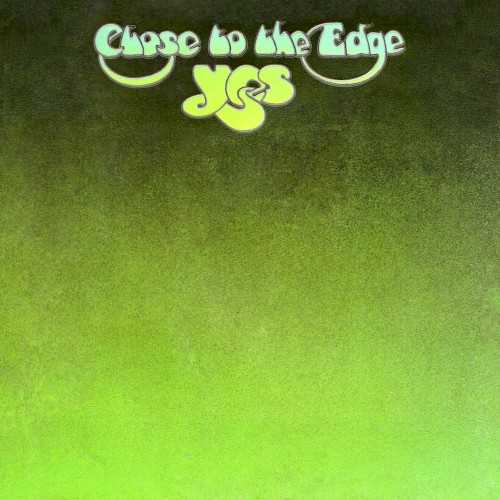 | Album: 5 of 47 Title: Close to the Edge Released: 1972-09-13 Tracks: 7 Duration: 1:05:05 Scroll: Up Down Top Bottom 25% 50% 75% Spotify TrackSamples Wikipedia Allmusic AlbumCover | 1 Close to the Edge: I. The Solid Time of Change / II. Total Mass Retain / III. I Get Up I Get Down / IV. Seasons of Man (18:45) 2 And You and I: I. Cord of Life / II. Eclipse / III. The Preacher the Teacher / IV. Apocalypse (10:11) 3 Siberian Khatru (08:56) 4 America (single version) (04:12) 5 Total Mass Retain (single edit) (03:21) 6 And You and I: I. Cord of Life / II. Eclipse / III. The Preacher The Teacher / IV. Apocalypse (alternate version) (10:17) 7 Siberia (studio run-through of “Siberian Khatru”) (09:19) |
| Close to the Edge : Allmusic album Review : With 1971s Fragile having left Yes poised quivering on the brink of what friend and foe acknowledged was the peak of the bands achievement, Close to the Edge was never going to be an easy album to make. Drummer Bill Bruford was already shifting restlessly against Jon Andersons increasingly mystic/mystifying lyricism, while contemporary reports of the recording sessions depicted bandmate Rick Wakeman, too, as little more than an observer to the vast tapestry that Anderson, Steve Howe, and Chris Squire were creating. For it was vast. Close to the Edge comprised just three tracks, the epic "And You and I" and "Siberian Khatru," plus a side-long title track that represented the musical, lyrical, and sonic culmination of all that Yes had worked toward over the past five years. Close to the Edge would make the Top Five on both sides of the Atlantic, dispatch Yes on the longest tour of their career so far and, if hindsight be the guide, launch the band on a downward swing that only disintegration, rebuilding, and a savage change of direction would cure. The latter, however, was still to come. In 1972, Close to the Edge was a flawless masterpiece. | ||
 | Album: 6 of 47 Title: Tales From Topographic Oceans Released: 1973-12 Tracks: 4 Duration: 1:21:12 Scroll: Up Down Top Bottom 25% 50% 75% Spotify TrackSamples Wikipedia Allmusic AlbumCover | 1 The Revealing Science of God: Dance of the Dawn (20:25) 2 The Remembering: High the Memory (20:36) 1 “The Ancient”: Giants Under the Sun (18:36) 2 Ritual: Nous sommes du soleil (21:33) |
| Tales From Topographic Oceans : Allmusic album Review : Four decades after its release, this is still the most controversial record in Yes output. Tales from Topographic Oceans was the place where Yes either fulfilled all of the promise shown on their previous five albums or slid off the rails in a fit of artistic hubris, especially on the part of lead singer Jon Anderson and guitarist Steve Howe, who dominated the composition credits here. Actually, the group probably did a bit of both here across 80 minutes of music on a fully packed double-LP set; the groups musical ambitions were obvious on its face, as it consisted of four long songs (really suites) each taking up a side of an album, and each longer than the previous albums side-long "Close to the Edge." And Tales had a jumping-off point that was as far advanced in complexity and density as Close to the Edge had been out in front of its predecessor, Fragile, -- and all of it made The Yes Album seem like basic rock & roll. Anderson, by virtue of his voice and lyrics, is the dominant personality on Tales, and his fascination with Eastern religion is fully manifest, as never before (or since). Confronted by song titles such as "The Revealing Science of God," and a concept derived from the Buddhist Shastric scriptures, the casual listener might have felt in need of both a running start and a sheet of footnotes: Yes keyboard player Rick Wakeman clearly felt something along those lines, as it was while making this record that he decided to exit the group. And, yet, Tales contains some of the most sublimely beautiful musical passages ever to come from the group, and develops a major chunk of that music in depth and degrees in ways that one can only marvel at, though theres a big leap from marvel to enjoy. If one can grab onto it, Tales is a long, sometimes glorious musical ride across landscapes strange and wonderful, thick with enticing musical textures; it offers the Yes fan the chance to be a true "astral traveler." Apart from one percussion break by Alan White that doesnt come off (if there had to be a Yes album with a percussion solo, why couldnt it have come along when Bill Bruford was in the band?), the music never falls flat, and its a pity that Wakeman couldnt appreciate the richness and vitality he brought to the album. And Anderson and Howe get to work in an extraordinarily wide range of musical voices. In another reality, perhaps the gorgeous, folk-like passages on Tales would have spawned songs of four or five minutes, but here they are, woven into these long-form pieces, and if one can take the plunge into these particular sonic oceans, and comfortably stay under long enough, its a journey that will reward. But its not a trip for everyone -- or even every Yes fan -- to take, especially not too soon after discovering the album. | ||
 | Album: 7 of 47 Title: Relayer Released: 1974-11-28 Tracks: 3 Duration: 40:28 Scroll: Up Down Top Bottom 25% 50% 75% Spotify TrackSamples Allmusic Wikipedia AlbumCover | 1 The Gates of Delirium (21:54) 2 Sound Chaser (09:30) 3 To Be Over (09:03) |
| Relayer : Allmusic album Review : Yes had fallen out of critical favor with Tales from Topographic Oceans, a two-record set of four songs that reviewers found indulgent. But they had not fallen out of the Top Ten, and so they had little incentive to curb their musical ambitiousness. Relayer, released 11 months after Tales, was a single-disc, three-song album, its music organized into suites that alternated abrasive, rhythmically dense instrumental sections featuring solos for the various instruments with delicate vocal and choral sections featuring poetic lyrics devoted to spiritual imagery. Such compositions seemed intended to provide an interesting musical landscape over which the listener might travel, and enough Yes fans did that to make Relayer a Top Ten, gold-selling hit, though critics continued to complain about the lack of concise, coherent song structures. | ||
 | Album: 8 of 47 Title: Yesterdays Released: 1975-02-27 Tracks: 8 Duration: 45:35 Scroll: Up Down Top Bottom 25% 50% 75% Spotify Allmusic Wikipedia AlbumCover | 1 America (10:36) 2 Looking Around (04:05) 3 Time and a Word (04:34) 4 Sweet Dreams (03:51) 5 Then (05:47) 6 Survival (06:22) 7 Astral Traveller (05:56) 8 Dear Father (04:21) |
| Yesterdays : Allmusic album Review : Yesterdays is a pleasant but minor compilation of early Yes cuts. Steve Howe and Rick Wakeman put in an appearance on an up-tempo art-rock reworking of Paul Simons "America"; listen for Bill Brufords wah-wah bongos. The rest of this record is largely a showcase for the shunned talents of Tony Kaye and Peter Banks, although the song selections pass over the edgier material in favor of hazy tunes like "Survival." The previously unreleased "Dear Father" is a wonderful, if heavily orchestrated, evocation of youthful angst. | ||
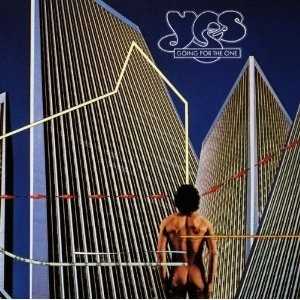 | Album: 9 of 47 Title: Going for the One Released: 1977-07-07 Tracks: 12 Duration: 1:19:37 Scroll: Up Down Top Bottom 25% 50% 75% Spotify TrackSamples Wikipedia Allmusic AlbumCover | 1 Going for the One (05:32) 2 Turn of the Century (07:55) 3 Parallels (05:58) 4 Wonderous Stories (03:49) 5 Awaken (15:34) 6 Montreux’s Theme (02:38) 7 Vevey (revisited) (04:46) 8 Amazing Grace (02:36) 9 Going for the One (rehearsal) (05:10) 10 Parallels (rehearsal) (06:21) 11 Turn of the Century (rehearsal) (06:58) 12 Eastern Number (12:16) |
| Going for the One : Allmusic album Review : Going for the One is perhaps the most overlooked item in the Yes catalog. It marked Rick Wakemans return to the band after a three-year absence, and also a return to shorter song forms after the experimentalism of Close to the Edge, Tales from Topographic Oceans, and Relayer. In many ways, this disc could be seen as the follow-up to Fragile. Its five tracks still retain mystical, abstract lyrical images, and the music is grand and melodic, the vocal harmonies perfectly balanced by the stinging guitar work of Steve Howe, Wakemans keyboards, and the solid rhythms of Alan White and Chris Squire. The title track features Howe on steel guitar (hes the only prog rocker who bothers with the instrument). "Turn of the Century" and the albums single, "Wonderous Stories," are lovely ballads the way only Yes can do them. "Parallels" is the albums big, pompous song, so well done that in later years the band opened concerts with it. Wakemans stately church organ, recorded at St. Martins Church, Vevey, Switzerland, sets the tone for this "Roundabout"-ish track. The concluding "Awaken" is the albums nod to the extended suite. Again, the lyrics are spacy in the extreme, but Jon Anderson and Squire are dead-on vocally, and the addition of Andersons harp and Whites tuned percussion round out this evocative track. | ||
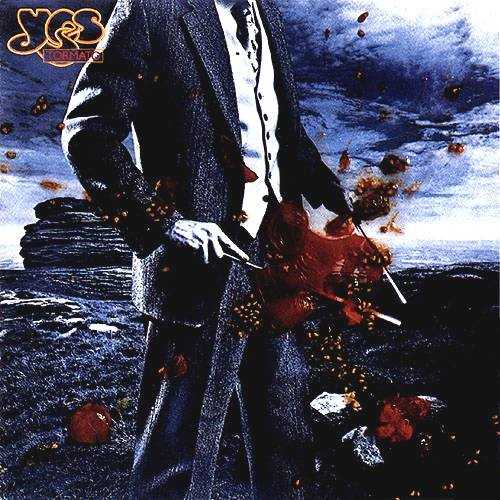 | Album: 10 of 47 Title: Tormato Released: 1978-09-20 Tracks: 8 Duration: 41:21 Scroll: Up Down Top Bottom 25% 50% 75% Spotify TrackSamples Allmusic Wikipedia AlbumCover | 1 Future Times / Rejoice (06:46) 2 Don’t Kill the Whale (03:56) 3 Madrigal (02:24) 4 Release, Release (05:46) 5 Arriving UFO (06:07) 6 Circus of Heaven (04:31) 7 Onward (04:03) 8 On the Silent Wings of Freedom (07:46) |
| Tormato : Allmusic album Review : The 70s model of Yes runs out of gas. Recorded in a morale slump and an impending haze of drink, Tormatos decent tunes are sabotaged by Rick Wakemans increasing penchant for cheesy textures and the bands thin overall sound. "Dont Kill the Whale" was their last successful single for years; the soaring "Onward" almost but not quite redeems the twee silliness of "Arriving UFO" and "Circus of Heaven." Of special interest is the pounding "On the Silent Wings of Freedom," which pushes Chris Squire and Alan White to the front of the mix, establishing the kind of aggressive and straightforward rhythms that would propel the band through the 80s. Bass freaks, take note: this tune also marks one of the few appearances of the Dipthong pedal, accounting for Squires distinctive "bow bow bow" sound. | ||
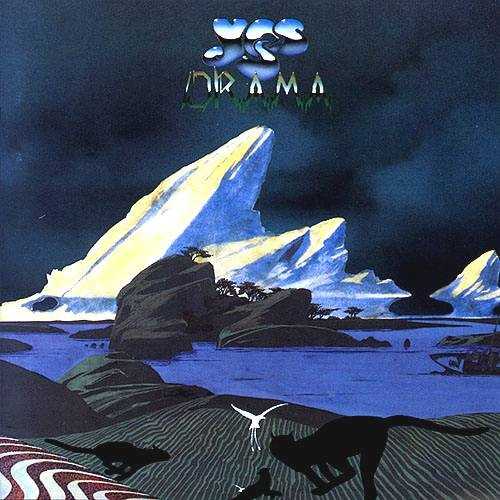 | Album: 11 of 47 Title: Drama Released: 1980-08-18 Tracks: 6 Duration: 37:00 Scroll: Up Down Top Bottom 25% 50% 75% Spotify TrackSamples Allmusic Wikipedia AlbumCover | 1 Machine Messiah (10:26) 2 White Car (01:23) 3 Does It Really Happen? (06:36) 4 Into the Lens (08:33) 5 Run Through the Light (04:44) 6 Tempus Fugit (05:16) |
| Drama : Allmusic album Review : For this one album, ex-Buggles Geoffrey Downes and Trevor Horn were drafted in to replace Jon Anderson and Rick Wakeman. It rocks harder than other Yes albums, and for classically inclined fans, it was a jarring departure; but it was a harbinger of Yes and Asia albums to come. A newly emboldened Chris Squire lays down aggressive rhythms with Alan White, and Steve Howe eschews his usual acoustic rags and flamenco licks for a more metallic approach, opting for sheets of electric sound. Prime cuts include the doom-laden "Machine Messiah" and the manic ska inflections of "Tempus Fugit." Despite the promise of this new material, the band soon fell apart; Horn went into production, Howe and Downes joined Asia, and Squire and White toyed and then gave up on a pair-up with Robert Plant and Jimmy Page, which was to be titled XYZ (i.e., Ex-Yes and Zeppelin). | ||
 | Album: 12 of 47 Title: Classic Yes Released: 1981 Tracks: 9 Duration: 1:05:18 Scroll: Up Down Top Bottom 25% 50% 75% Spotify Allmusic Wikipedia AlbumCover | 1 Heart of the Sunrise (10:36) 2 Wonderous Stories (03:49) 3 Yours Is No Disgrace (09:41) 4 Starship Trooper: Life Seeker / Disillusion / Würm (09:32) 5 Long Distance Runaround (03:30) 6 The Fish (Schindleria Præmaturus) (02:38) 7 And You and I: Cord of Life / Eclipse / The Preacher the Teacher / The Apocalypse (10:06) 8 Roundabout (07:54) 9 Ive Seen All Good People: Your Move / All Good People (07:28) |
| Classic Yes : Allmusic album Review : Compiled by Chris Squire (in case youre wondering how "The Fish" made it this far upstream), Classic Yes was Atlantics initial attempt to distill the bands best music. The key to this collection is in the title: this is the bands "classic" music. Anything prior to The Yes Album is cut out, no attempt is made to salvage snippets from Relayer or Tales from Topographic Oceans; Drama and Tormato are dispensed with. What remains is what made this band great: the science fiction and fantasy-laced epics, the tangible wizardry of their arrangements, moments that crystallized the magical power of music, and two unreleased live tracks from 1978 that find the band tethered to the realm of mortals." The logic behind the live tracks is pretty simple: "Roundabout" and "Ive Seen All Good People" are two tracks that missed the original LP cut, so live versions of them were included with the LP as a bonus 45 rpm single. This is only a minor complaint, though, and one easily overlooked in lieu of the music that made the first cut. Squires picks are undoubtedly the right ones: "Heart of the Sunrise" to start things off, "And You and I" in all its ten-minute glory, "Starship Trooper" and "Yours Is No Disgrace" from their third album, and "Long Distance Runaround" and "The Fish." Classic Yes remains the place to start if youre interested in the band or just want to hear their best music in one sitting. | ||
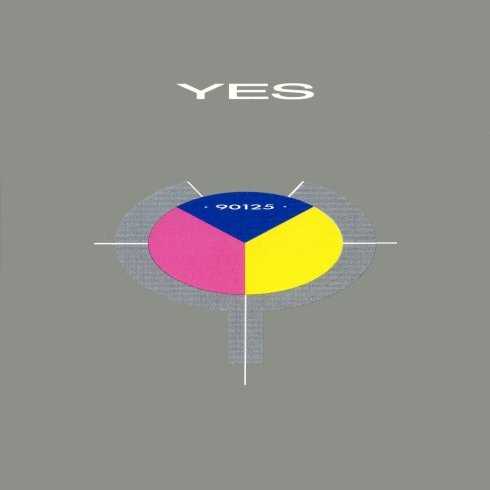 | Album: 13 of 47 Title: 90125 Released: 1983-11-07 Tracks: 9 Duration: 44:40 Scroll: Up Down Top Bottom 25% 50% 75% Spotify Wikipedia Allmusic AlbumCover | 1 Owner of a Lonely Heart (04:27) 2 Hold On (05:17) 3 It Can Happen (05:29) 4 Changes (06:19) 5 Cinema (02:06) 6 Leave It (04:13) 7 Our Song (04:18) 8 City of Love (04:52) 9 Hearts (07:35) |
| 90125 : Allmusic album Review : A stunning self-reinvention by a band that many had given up for dead, 90125 is the album that introduced a whole new generation of listeners to Yes. Begun as Cinema, a new band by Chris Squire and Alan White, the project grew to include the slick production of Trevor Horn, the new blood (and distinctly 80s guitar sound) of Trevor Rabin, and eventually the trademark vocals of returning founder Jon Anderson. His late entry insured that Rabin and Horn had a heavy influence on the sound. The album also marked the return of prodigal keyboardist Tony Kaye, whose crisp synth work on "Changes" marked the bands definitive break with its art rock roots. "Owner of a Lonely Heart" was a huge crossover hit, and its orchestral break has been relentlessly sampled by rappers ever since. The vocal harmonies of "Leave It" and the beautifully sprawling "Hearts" are additional high points, but theres nary a duff track on the album. | ||
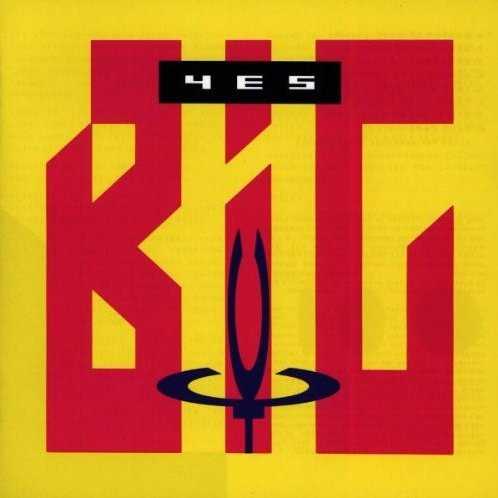 | Album: 14 of 47 Title: Big Generator Released: 1987-09-17 Tracks: 8 Duration: 43:33 Scroll: Up Down Top Bottom 25% 50% 75% Spotify Allmusic Wikipedia AlbumCover | 1 Rhythm of Love (04:46) 2 Big Generator (04:33) 3 Shoot High Aim Low (07:02) 4 Almost Like Love (05:00) 5 Love Will Find a Way (04:49) 6 Final Eyes (06:25) 7 I’m Running (07:37) 8 Holy Lamb (Song for Harmonic Convergence) (03:19) |
| Big Generator : Allmusic album Review : The four-years-in-the-making follow-up to Yes comeback album, 90125, Big Generator was also a million-selling hit, although not as successful as its predecessor, probably because the singles "Love Will Find a Way" (number 30) and "Rhythm of Love" (number 40) couldnt match "Owner of a Lonely Heart" from the previous LP, even if they were favorites on AOR radio at the time. Actually, it was the title track that was a carbon copy of "Owner," so maybe that was the problem. More likely, though, "Owner" was a one-shot (courtesy of producer Trevor Horn), and as Yes asserted itself more here, the band reverted more to its old style, making for some confusion. Nevertheless, this album was Yes last major hit. | ||
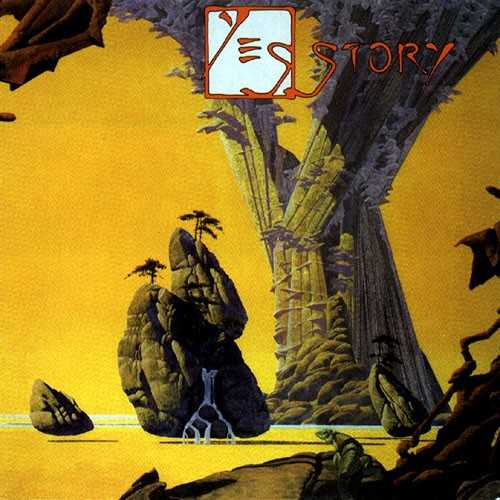 | Album: 15 of 47 Title: YesStory Released: 1991 Tracks: 18 Duration: 2:18:08 Scroll: Up Down Top Bottom 25% 50% 75% Spotify Allmusic Wikipedia AlbumCover | 1 Survival (06:17) 2 No Opportunity Necessary, No Experience Needed (04:48) 3 Time and a Word (04:30) 4 Starship Trooper: a. Life Seeker b. Disillusion c. Würm (09:26) 5 I’ve Seen All Good People: a. Your Move b. All Good People (06:54) 6 Roundabout (08:34) 7 Heart of the Sunrise (10:36) 8 Close to the Edge: I. The Solid Time of Change / II. Total Mass Retain / III. I Get Up I Get Down / IV. Seasons of Man (18:34) 1 Ritual: Nous sommes du soleil (21:33) 2 Soon (single edit) (04:07) 3 Wonderous Stories (03:49) 4 Going for the One (05:32) 5 Don’t Kill the Whale (03:54) 6 Does It Really Happen? (06:31) 7 Make It Easy (06:09) 8 Owner of a Lonely Heart (04:27) 9 Rhythm of Love (04:46) 10 Changes (07:33) |
| YesStory : Allmusic album Review : Despite the seeming overabundance of Yes compilations and live recordings, this two-CD release does fill an important niche -- its the definitive Yes set for fans who demand more than a single disc (The Very Best of Yes), but dont want to spring for the bulky box set. Essentially a distillation of the Yesyears box set, it benefits from the fine remastering job, while at the same time trimming away less vital tracks like the Tormato B-sides and the tepid 80s live performances. Still, its shocking that the fine album, Drama, was left out entirely, or that Relayer was whittled down to the unsatisfying excerpt of "Soon." And only picking the two hit singles from 90125 and Big Generator wont fool many true fans of their later work -- both could have been passed over for better cuts that didnt pull in the teenyboppers. Still, despite its post-1980 lapses, fans of early Yes may find this an entirely satisfactory compilation. | ||
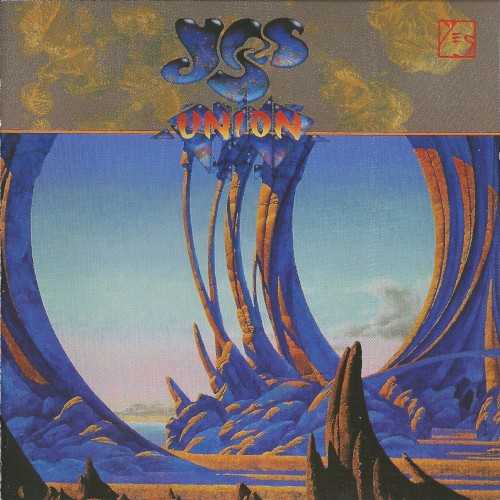 | Album: 16 of 47 Title: Union Released: 1991-04-29 Tracks: 15 Duration: 1:09:55 Scroll: Up Down Top Bottom 25% 50% 75% Spotify Allmusic Wikipedia AlbumCover | 1 I Would Have Waited Forever (06:33) 2 Shock to the System (05:08) 3 Masquerade (02:17) 4 Lift Me Up (06:30) 5 Without Hope You Cannot Start the Day (05:18) 6 Saving My Heart (04:41) 7 Miracle of Life (07:30) 8 Silent Talking (04:00) 9 The More We Live – Let Go (04:54) 10 Angkor Wat (05:23) 11 Dangerous (Look in the Light of What You’re Searching For) (03:38) 12 Holding On (05:24) 13 Evensong (00:51) 14 Take the Water to the Mountain (03:12) 15 Give and Take (04:29) |
| Union : Allmusic album Review : With the exception of Peter Banks and Trevor Horn, virtually all the major contributors to Yes in its various incarnations over the previous 23 years, including both of its drummers, threw their hands into the making of Union, which was supported by a massive tour that filled arenas with at least two generations of fans. So even if Union had been as good as one hoped, this was an album that couldnt possibly have met the expectations inherent in the array of talent involved. The material is reasonably solid, and under ordinary circumstances this album would have been considered just fine, if not exceptional. "I Would Have Waited Forever" shows off the groups vocalizing (by Chris Squire and Jon Anderson) at its most melodic and Steve Howe has one of the most beautiful classical guitar showcases of his Yes career on "Masquerade." But the Trevor Rabin/Chris Squire-composed "Lift Me Up" seems a forced exercise in heaviness, and "Without Hope You Cannot Start" seems more like a composed-by-numbers piece than a truly inspired song. None of the material here would rate alongside the better (forget the best) tracks from any of the groups 1971-1974 albums. Perhaps the defects revealed the real purpose of this album, which wasnt so much to make a definitive statement by any of the participants, but rather to show the flag of the reunited band, which it did. The single "Lift Me Up" topped Billboards Album Rock Tracks chart for six weeks, with two other cuts also making the list. But the single also only limped to number 86 on the Hot 100, and although the album shot to number 15 and went gold, this was a serious falloff from previous sales. | ||
 | Album: 17 of 47 Title: YesYears Released: 1991-08-06 Tracks: 46 Duration: 4:51:37 Scroll: Up Down Top Bottom 25% 50% 75% Allmusic Wikipedia AlbumCover | 1 Something’s Coming (07:09) 2 Survival (06:17) 3 Every Little Thing (05:42) 4 Then (04:18) 5 Everydays (04:08) 6 Sweet Dreams (03:48) 7 No Opportunity Necessary, No Experience Needed (04:48) 8 Time and a Word (04:30) 9 Starship Trooper: a. Life Seeker / b. Disillusion / c. Würm (09:25) 10 Yours Is No Disgrace (09:41) 11 I’ve Seen All Good People: a. Your Move / b. All Good People (06:56) 12 Long Distance Runaround (03:30) 13 The Fish (Schindleria Præmaturus) (02:38) 1 Roundabout (08:34) 2 Heart of the Sunrise (10:36) 3 America (04:03) 4 Close to the Edge: I. The Solid Time of Change / II. Total Mass Retain / III. I Get Up I Get Down / IV. Seasons of Man (18:34) 5 Ritual: Nous sommes du soleil (21:33) 6 Sound Chaser (09:21) 1 Soon (04:07) 2 Amazing Grace (02:31) 3 Vevey, Part One (01:06) 4 Wonderous Stories (03:49) 5 Awaken (15:34) 6 Montreux’s Theme (02:26) 7 Vevey, Part Two (00:56) 8 Going for the One (05:32) 9 Money (03:12) 10 Abilene (03:55) 11 Don’t Kill the Whale (03:54) 12 On the Silent Wings of Freedom (07:46) 13 Does It Really Happen? (06:31) 14 Tempus Fugit (05:16) 15 Run With the Fox (04:09) 16 I’m Down (02:31) 1 Make It Easy (06:08) 2 It Can Happen (06:01) 3 Owner of a Lonely Heart (04:27) 4 Hold On (05:15) 5 Shoot High Aim Low (07:00) 6 Rhythm of Love (04:46) 7 Love Will Find a Way (04:49) 8 Changes (07:33) 9 And You and I: I. Cord of Life / II. Eclipse / III. The Preacher the Teacher / IV. Apocalypse (10:48) 10 Heart of the Sunrise (10:50) 11 Love Conquers All (04:57) |
| YesYears : Allmusic album Review : It would be really easy for someone to complain about this song or that not being included on this four-disc set. However, when you consider the amount of material in Yes catalog by the point of this release, such arguments are somewhat silly. There is no way that all the songs everyone wanted included could be here. The disc includes a nice balance of original release material and alternate takes, unreleased songs, etc. Of course, for the die-hard Yes fans, probably the main audience for this box set, the rarities are the true selling point of the compilation. There are some very interesting ones represented here. "Vevey" parts one and two are instrumental cuts performed by Jon Anderson and Rick Wakeman. They are songs that were recorded during the "Going for the One" sessions. "Montreuxs Theme" is another from that same time. "Money," a humorous track with a raunchy spoken word voiceover by Rick Wakeman, is a sure winner. "Run With the Fox," although not truly a Yes song, but rather a recording by Alan White and Chris Squire, is a great Christmas-oriented piece. Of course, Yes live take on the Beatles "Im Down" is another great addition to any Yes collection. The comprehensive booklet that accompanies the set is very well done. All in all, this set should please both the die-hard fans and those wanting a quick immersion in the works of this classic progressive rock outfit. | ||
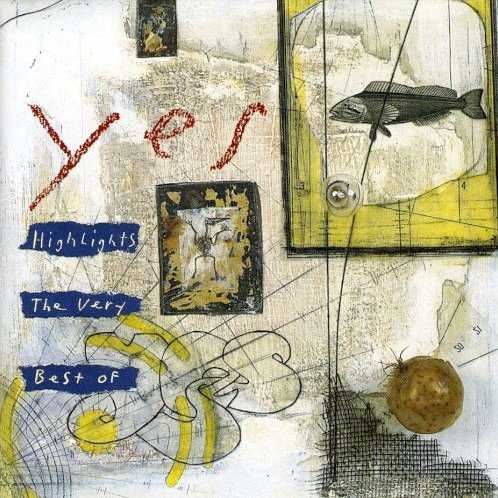 | Album: 18 of 47 Title: Highlights: The Very Best of Yes Released: 1993-09-21 Tracks: 12 Duration: 1:06:11 Scroll: Up Down Top Bottom 25% 50% 75% Spotify Wikipedia Allmusic AlbumCover | 1 Survival (06:17) 2 Time and a Word (04:30) 3 Starship Trooper: a. Life Seeker b. Disillusion c. Würm (09:26) 4 I’ve Seen All Good People: a. Your Move b. All Good People (06:54) 5 Roundabout (08:34) 6 Long Distance Runaround (03:30) 7 Soon (single edit) (04:07) 8 Wonderous Stories (03:49) 9 Going for the One (05:32) 10 Owner of a Lonely Heart (04:27) 11 Leave It (04:13) 12 Rhythm of Love (04:46) |
| Highlights: The Very Best of Yes : Allmusic album Review : If you view The Very Best of Yes as a singles sampler, not an attempt to offer a thorough overview of Yes doggedly album-oriented career, this 11-track collection is actually quite successful, offering the bulk of the bands best-known songs, from "Ive Seen All Good People," "Roundabout," and "Long Distance Runaround" to "Owner of a Lonely Heart" and "Leave It." Its sequenced chronologically, too, which gives some sense of the bands development. Therefore, for the curious, this offers a nice snapshot of what Yes did throughout the 70s and into the mid-80s. | ||
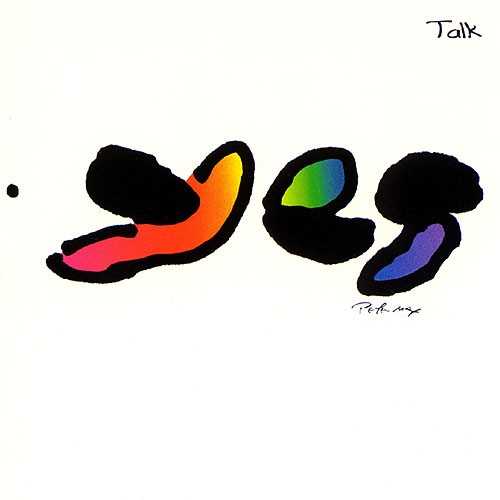 | Album: 19 of 47 Title: Talk Released: 1994-03-16 Tracks: 9 Duration: 54:59 Scroll: Up Down Top Bottom 25% 50% 75% Spotify Allmusic Wikipedia AlbumCover | 1 The Calling (06:56) 2 I Am Waiting (07:25) 3 Real Love (08:49) 4 State of Play (05:00) 5 Walls (04:57) 6 Where Will You Be (06:09) 7 Endless Dream, Part A: Silent Spring (instrumental) (01:53) 8 Endless Dream, Part B: Talk (11:56) 9 Endless Dream, Part C: Endless Dream (01:51) |
| Talk : Allmusic album Review : After Yes returned to the 90125 lineup of Jon Anderson, Trevor Rabin, Chris Squire, Tony Kaye and Alan White, they recorded Talk, the first new Yes album since the debacle of Union. Theres a new label (yet again) and a new logo (a colorfully blobby thing by Peter Max.) The nice thing is that theres a new attitude powering the band, and a few surprises hidden away in the songs. This is definitely Yes, and a Yes with a history, but theres no sense of either trying to overcome the past or recreate it. Everythings nicely blended in, in fact, giving the album a great deal of muscle. There are moments on this album strongly reminiscent of Yes music all the way back to the first album -- "I Am Waiting," particularly. That Tony Kaye sticks entirely to Hammond organ helps immensely with that impression; that Jon Anderson is singing better than he has in years also fits into that. This album is fun and extremely well done, it does a good job of balancing the urge for a bit of bum-shaking with instrumental pyrotechnics, and it sounds as though everyone had a good time making it. It also has some really nifty songs that stick in the mind, from the opening "The Calling" to the closing 16-minute "Endless Dream." | ||
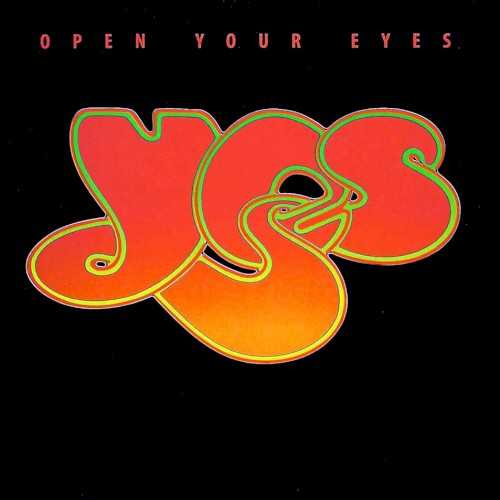 | Album: 20 of 47 Title: Open Your Eyes Released: 1997-11-25 Tracks: 11 Duration: 1:14:11 Scroll: Up Down Top Bottom 25% 50% 75% Spotify Wikipedia Allmusic AlbumCover | 1 New State of Mind (06:00) 2 Open Your Eyes (05:14) 3 Universal Garden (06:16) 4 No Way We Can Lose (04:56) 5 Fortune Seller (05:01) 6 Man in the Moon (04:40) 7 Wonderlove (06:07) 8 From the Balcony (02:43) 9 Love Shine (04:38) 10 Somehow… Someday (04:46) 11 The Solution / [silence] / The Source (23:47) |
| Open Your Eyes : Allmusic album Review : Many Yes fans really dislike this album. However, it is a disc, as much of the classics in the groups catalog are, that is not fully appreciated on the first few listenings. You really need to give this one the time to sink in. The faithful in Yes fandom had very high hopes for this release, as it was the first full studio album after Steve Howe re-joined the group. Many were anticipating another Close to the Edge. The disc certainly does not live up to that standard. It actually works better serving as a bridge between the classic Yes sound of the 70s and the more pop-oriented Trevor Rabin-era material. It also seems at times to carry on in the direction begun with such albums as Tormato and Drama. There are some fine songs in the set, but there are also a few pieces that are worthy of the contempt of the diehards. There are at least a couple of standout tracks here that would, having been released on a different album, probably have become Yes classics and fan favorites. The title track is one of those that seems to merge the 70s and 80s Yes styles, but it also has leanings in the direction of Chris Squires solo release, Fish out of Water. That Squire styling is really natural since the song was originally intended for a new solo album from the bassist. Among the other tracks that are highlights here are "Universal Garden" (a very intriguing number that seems to combine the classic Yes sound with some tendencies toward Jon Andersons solo work), "Fortune Seller," and "Wonderlove" (one that feels a lot like an extension of the bands work just prior to their 1980 split). On the other end of the spectrum come "No Way We Can Lose" (essentially a new attempt at the reggae-ish Rabin-era cut "Saving My Heart") and "Man on the Moon" (a trite pop ditty with very weak lyrics). The rest of the album fits more toward the middle ground in terms of quality. There are two versions of the disc out there: the first standard release and a surround-sound edition (the first album ever released in that format). If you have a surround-sound system, or intend to get one, you should try to pay the extra money for that version. The sound of the CD really envelops you, and it becomes an expansive experience when played in that format. The only thing missing from that version is the hidden track at the end of the original release. Since that track was really not much more than an extended piece of atmosphere, it is not really a loss. | ||
 | Album: 21 of 47 Title: Yes, Friends and Relatives Released: 1998-08-25 Tracks: 19 Duration: 2:20:01 Scroll: Up Down Top Bottom 25% 50% 75% Wikipedia AlbumCover | 1 Owner of a Lonely Heart (03:33) 2 Ice (04:52) 3 Red and White (03:33) 4 Zone of O (05:19) 5 Up North (05:25) 6 The Pyramids of Egypt (07:06) 7 Roundabout (02:32) 8 Sync or Swim (06:08) 9 Arthur (12:57) 10 Close to the Edge (19:40) 1 No Expense Spared (05:33) 2 Say (03:50) 3 Walk, Don’t Run (03:02) 4 Tron Thomi (07:55) 5 10 Million (03:39) 6 Excerpts From Tales From Topographic Oceans (09:08) 7 The More You Know (03:44) 8 Journey (21:26) 9 America (10:36) |
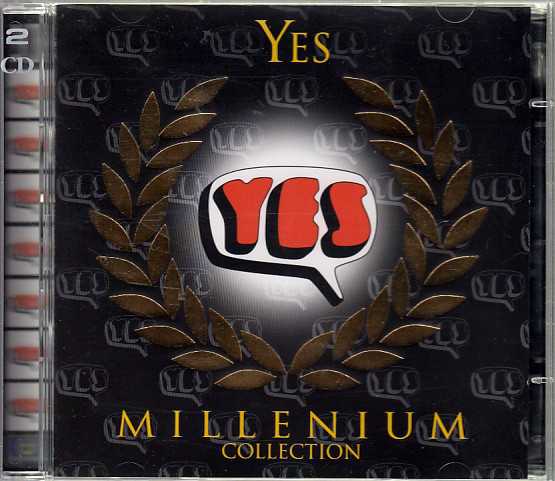 | Album: 22 of 47 Title: Millenium Collection Released: 1999 Tracks: 18 Duration: 1:35:36 Scroll: Up Down Top Bottom 25% 50% 75% AlbumCover | 1 Something’s Coming (07:38) 2 Everydays (05:11) 3 Sweetness (04:13) 4 Dear Father (05:32) 5 Every Little Thing (05:31) 6 Looking Around (03:39) 7 Sweet Dreams (03:26) 8 Then (04:17) 9 No Opportunity Necessary, No Experience Required (04:18) 1 Astral Traveller (06:01) 2 Then (reprise) (05:15) 3 Every Little Thing (reprise) (06:49) 4 Everydays (reprise) (06:06) 5 For Everyone (04:34) 6 (Intro) Sweetness (05:16) 7 Something’s Coming (07:57) 8 Sweet Dreams (04:14) 9 Beyond and Before (05:28) |
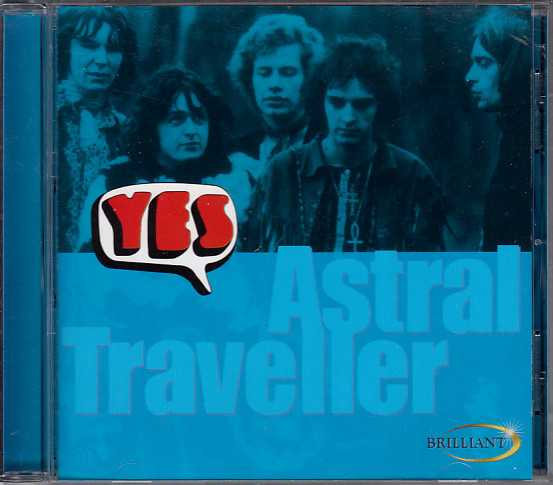 | Album: 23 of 47 Title: Astral Traveller Released: 1999 Tracks: 12 Duration: 59:58 Scroll: Up Down Top Bottom 25% 50% 75% Allmusic AlbumCover | 1 Something’s Coming (07:38) 2 Everydays (05:12) 3 Sweetness (04:14) 4 Dear Father (05:33) 5 Every Little Thing (05:31) 6 Looking Around (03:40) 7 Sweet Dreams (03:26) 8 Then (04:19) 9 No Opportunity Necessary, No Experience Required (04:16) 10 For Everyone (04:35) 11 Beyond and Before (05:26) 12 Astral Traveller (06:01) |
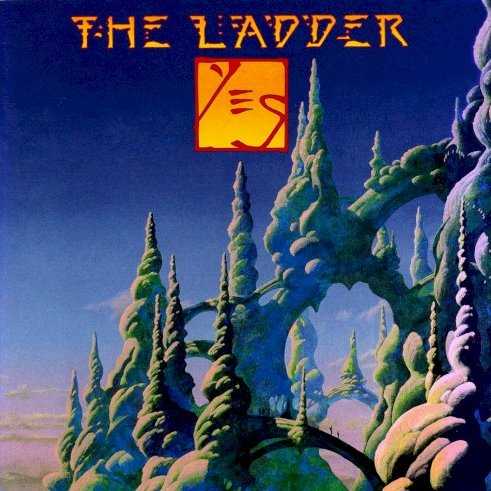 | Album: 24 of 47 Title: The Ladder Released: 1999-09-20 Tracks: 11 Duration: 1:00:25 Scroll: Up Down Top Bottom 25% 50% 75% Spotify Allmusic Wikipedia AlbumCover | 1 Homeworld (The Ladder) (09:34) 2 It Will Be a Good Day (The River) (04:53) 3 Lightning Strikes (04:35) 4 Can I? (01:31) 5 Face to Face (05:03) 1 If Only You Knew (05:42) 2 To Be Alive (Hep Yadda) (05:07) 3 Finally (06:01) 4 The Messenger (05:12) 5 New Language (09:19) 6 Nine Voices (Longwalker) (03:22) |
| The Ladder : Allmusic album Review : Youd probably need a mainframe computer to keep track of all the personnel changes in Yes over the years, and the quality of the prog rock giants music has fluctuated nearly as much as the lineups. The Ladder is a synthesis of the best traits of the experimental Fragile era and the pop-oriented 90125 era. Producer Bruce Fairbairn completed The Ladder shortly before his death in 1999, and unlike some of his work with Bon Jovi, Aerosmith, Kiss, and others, he didnt overproduce it. Vocalist Jon Anderson, lead guitarist Steve Howe, and bass guitarist Chris Squire all have fine moments, and drummer Alan White is consistent. The roles of keyboardist Igor Khoroshev and, in particular, guitarist Billy Sherwood are less clear. It occasionally seems the purpose of Khoroshevs keyboards is providing a variety of sonic textures instead of functioning as a lead instrument. Sherwoods second guitar tends to flesh out the sound. "Homeworld (The Ladder)" is a tight band performance, but the supple vocals/acoustic guitar/piano coda is the best part. Howes bouncy acoustic guitar drives "Lightning Strikes," yet the biggest surprise is the addition of a horn section. The energetic "Face to Face" is the strongest track, and Squire lets loose with a sputtering bassline. "If Only You Knew" is a sweet, straightforward love song Anderson wrote for his wife. "The Messenger" has a smooth, funky feel -- a remarkable feat considering prog rock is usually considered the "whitest" rock genre. "New Language" is the best long song on The Ladder, thanks to a clever arrangement giving all six members an opportunity to demonstrate their talents. | ||
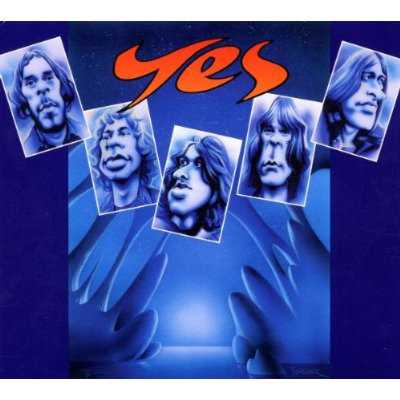 | Album: 25 of 47 Title: Geographic Potions Released: 2000 Tracks: 12 Duration: 59:12 Scroll: Up Down Top Bottom 25% 50% 75% AlbumCover | 1 Something’s Coming (07:38) 2 Everydays (05:12) 3 Sweetness (04:14) 4 Dear Father (05:33) 5 Every Little Thing (05:31) 6 Looking Around (03:39) 7 Sweet Dreams (03:26) 8 Then (04:19) 9 No Opportunity Necessary, No Experience Required (04:16) 10 Astral Traveller (05:38) 11 For Everyone (04:14) 12 Beyond and Before (05:26) |
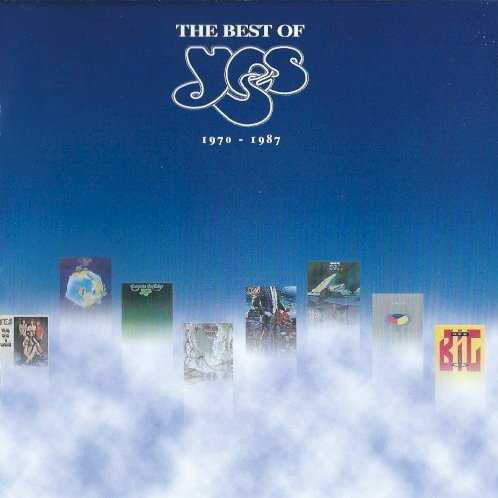 | Album: 26 of 47 Title: The Best of Yes: 1970–1987 Released: 2000-01-03 Tracks: 10 Duration: 1:20:05 Scroll: Up Down Top Bottom 25% 50% 75% Allmusic AlbumCover | 1 No Opportunity Necessary, No Experience Needed (04:48) 2 America (10:32) 3 Heart of the Sunrise (10:36) 4 And You and I (10:09) 5 Siberian Khatru (08:56) 6 Sound Chaser (09:27) 7 On the Silent Wings of Freedom (07:46) 8 Into the Lens (08:33) 9 Owner of a Lonely Heart (04:27) 10 Love Will Find a Way (04:49) |
 | Album: 27 of 47 Title: Keystudio Released: 2001 Tracks: 7 Duration: 1:14:24 Scroll: Up Down Top Bottom 25% 50% 75% Allmusic Wikipedia AlbumCover | 1 Foot Prints (09:09) 2 Be the One: a. The One b. Humankind c. Skates (09:53) 3 Mind Drive (18:38) 4 Bring Me to the Power (07:25) 5 Sign Language (03:28) 6 That, That Is: a. Togetherness b. Crossfire c. The Giving Things d. That Is e. All in All f. How Did Heaven Begin g. Agree to Agree (19:16) 7 Children of the Light (06:34) |
| Keystudio : Allmusic album Review : Yes 2002 album Keystudio is a compilation, but one that makes perfect sense. It collects seven superb studio tracks that the progressive rock giants classic lineup -- vocalist Jon Anderson, guitarist Steve Howe, keyboardist Rick Wakeman, bass guitarist Chris Squire, and drummer Alan White -- recorded as bonus cuts for the live albums Keys to Ascension and Keys to Ascension, Vol. 2. Even if Keystudio was released to cash in on the 2002 tour by Anderson, Howe, Wakeman, Squire, and White, it doesnt matter because these new songs were the strongest released by any version of Yes in years. "Be the One" and "That, That Is" are from 1996s Keys to Ascension and "Mind Drive," "Foot Prints," "Bring Me to the Power," "Children of the Light," and "Sign Language" are from 1997s Keys to Ascension, Vol. 2. These songs retain Yes trademark instrumental prowess, but theres a maturity to the cohesive arrangements and the melodies. Most tracks push either ten or 20 minutes, ensuring the adoration of Yes diehards who yearn for 1970s-style experimentation. All seven songs have their share of highlights, but the best are "Mind Drive," "Foot Prints," and "Sign Language." "Mind Drive" stretches out with both soothing, dreamy passages and tough, full-band bombast. "Foot Prints" relies largely on the rhythm section drive of Squire and White and Howes economical guitar lines. The terrifically tasteful instrumental "Sign Language" is basically a duet by co-writers Howe and Wakeman. "That, That Is" resembles Yes 1970s work the most, with the exception of Andersons lyrics, which address drug and violence problems in inner cities, not his usual mystical topics. The only new piece on Keystudio is Wakemans "Lightning," a brief intro segment for "Children of the Light." Keystudio would have been a smash had it been released 25-30 years earlier. Even casual Yes fans from both the 1970s and 1980s should enjoy Keystudio. Highly recommended. | ||
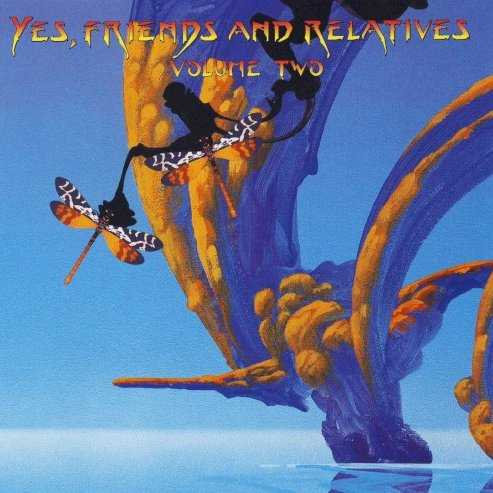 | Album: 28 of 47 Title: Yes, Friends and Relatives, Volume 2 Released: 2001-01-29 Tracks: 20 Duration: 1:58:48 Scroll: Up Down Top Bottom 25% 50% 75% AlbumCover | 1 New State of Mind (06:00) 2 Big Girls Don’t Cry (03:42) 3 Sad Eyed Lady of the Lowlands (11:52) 4 Merlin the Magician (06:46) 5 Days of Wonder (05:00) 6 Magic Love (03:46) 7 Footloose & Fancy Free (03:51) 8 Madman Blues (06:35) 9 Night Trade (03:14) 10 New Language (09:19) 1 Homeworld (09:33) 2 It’s All Over Now Baby Blue (04:34) 3 Catherine Howard (09:14) 4 Faithfully (04:07) 5 Coming Home (05:36) 6 Red Light Ahead (05:47) 7 From the Balcony (02:43) 8 Number 10 (05:29) 9 Dewey Eyed, Then Dancing (05:34) 10 Finally (06:01) |
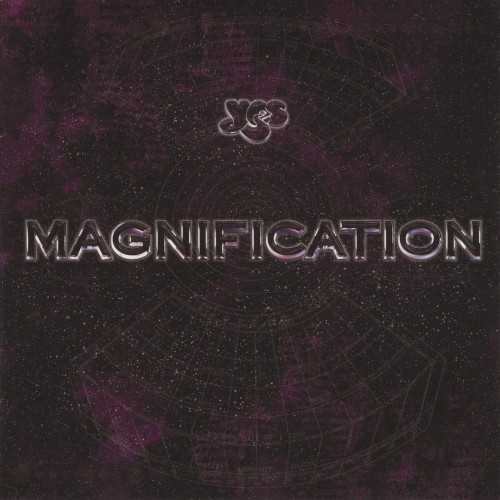 | Album: 29 of 47 Title: Magnification Released: 2001-09-11 Tracks: 13 Duration: 1:47:23 Scroll: Up Down Top Bottom 25% 50% 75% Spotify Allmusic Wikipedia AlbumCover | 1 Magnification (07:17) 2 Spirit of Survival (06:03) 3 Don’t Go (04:32) 4 Give Love Each Day (07:45) 5 Can You Imagine? (03:00) 6 We Agree (06:32) 7 Soft as a Dove (02:19) 8 Dreamtime (10:46) 9 In the Presence Of: i) Deeper ii) Death of Ego iii)True Beginner iv) Turn Around and Remember (10:25) 10 Time Is Time (02:08) 1 Close to the Edge (20:06) 2 Long Distance Runaround (03:45) 3 Gates of Delirium / Soon (22:41) |
| Magnification : Allmusic album Review : Many call Yes brand of progressive rock "symphonic rock." The term means that the group produces arrangements in the vein of a symphony using typical rock instrumentation. With Magnification, Yes has taken that a step further, adding a symphony orchestra. The orchestra is not simply thrown over the top, though; the songs were written for this particular grouping. Yes has flirted with this type of thing before. Released in 1970, the Time and a Word album featured a string section, but the complete integration is what makes Magnification a superior work. The material on the CD is pretty standard modern Yes fare, but the addition of that symphony really does create a whole new texture. It also seems as if it inspired the band, and some members put in performances that are head and shoulders above their recent work. The album does have its weak moments and gets just a little over the top at times, but there are a lot more moments that shine than dull ones. | ||
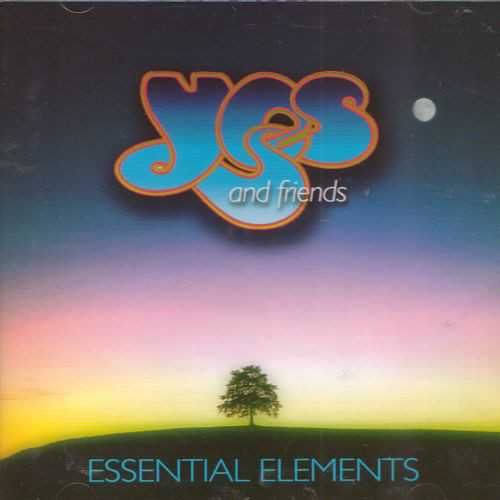 | Album: 30 of 47 Title: Essential Elements Released: 2002 Tracks: 15 Duration: 1:17:16 Scroll: Up Down Top Bottom 25% 50% 75% Allmusic AlbumCover | 1 Roundabout (live) (07:28) 2 Nine Voices (03:23) 3 Dont Think Twice Its All Right (04:04) 4 Umberto II (03:39) 5 Owner of a Lonely Heart (03:33) 6 Open Your Eyes (05:14) 7 Dream River (03:58) 8 Merlin the Magician (06:46) 9 Lightning Strikes (04:37) 10 Dancing Fool (03:51) 11 Time Is Time (02:09) 12 From the Balcony (02:45) 13 No Rhyme (04:54) 14 Tron Thomi (07:55) 15 Yours Is No Disgrace (13:00) |
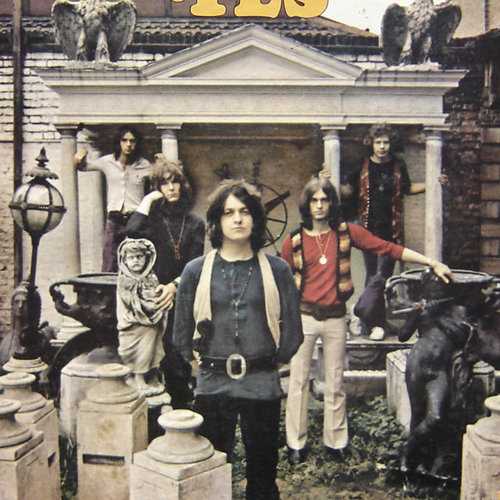 | Album: 31 of 47 Title: Yes-Today Released: 2002 Tracks: 17 Duration: 1:59:55 Scroll: Up Down Top Bottom 25% 50% 75% AlbumCover | 1 New State of Mind (06:01) 2 Homeworld (The Ladder) (09:34) 3 The Messenger (05:12) 4 It Will Be a Good Day (The River) (04:55) 5 Perpetual Change (live 2000) (10:24) 6 Universal Garden (06:18) 7 Owner of a Lonely Heart (live) (05:51) 8 And You and I (live 2000) (11:23) 1 Open Your Eyes (05:16) 2 Face to Face (05:04) 3 New Language (09:22) 4 From the Balcony (02:43) 5 Fortune Seller (05:02) 6 If Only You Knew (05:43) 7 Somehow Someday (04:45) 8 To Be Alive (Hep Yadda) (05:10) 9 Awaken (live, 2000) (17:03) |
 | Album: 32 of 47 Title: In a Word: Yes (1969– ) Released: 2002-07-30 Tracks: 55 Duration: 6:34:14 Scroll: Up Down Top Bottom 25% 50% 75% Wikipedia AlbumCover | 1 Every Little Thing (05:45) 2 Sweetness (04:35) 3 Survival (06:22) 4 Then (05:47) 5 Sweet Dreams (03:51) 6 Astral Traveller (05:56) 7 Time and a Word (04:34) 8 Dear Father (04:13) 9 Yours Is No Disgrace (09:41) 10 Clap (03:24) 11 Perpetual Change (08:55) 12 Starship Trooper: a. Life Seeker b. Disillusion c. Würm (09:28) 13 I’ve Seen All Good People: a. Your Move / b. All Good People (06:56) 1 Roundabout (08:34) 2 South Side of the Sky (07:56) 3 Heart of the Sunrise (10:36) 4 America (10:32) 5 Close to the Edge: I. The Solid Time of Change II. Total Mass Retain III. I Get Up I Get Down IV. Seasons of Man (18:38) 6 The Revealing Science of God, Dance of the Dawn (22:01) 1 Siberian Khatru (08:56) 2 Long Distance Runaround (03:33) 3 The Gates of Delirium (21:50) 4 To Be Over (09:07) 5 Going for the One (05:32) 6 Turn of the Century (07:41) 7 Wonderous Stories (03:49) 8 Don’t Kill the Whale (03:56) 9 Release, Release (05:46) 10 Arriving UFO (06:07) 11 Richard (03:33) 1 Tango (03:48) 2 Never Done Before (02:10) 3 Crossfire (02:42) 4 Machine Messiah (10:26) 5 Tempus Fugit (05:17) 6 Owner of a Lonely Heart (04:27) 7 It Can Happen (05:29) 8 Leave It (04:13) 9 Hold On (05:16) 10 Rhythm of Love (04:52) 11 Love Will Find a Way (04:50) 12 Holy Lamb (Song for Harmonic Convergence) (03:22) 13 Brother of Mine: I. The Big Dream II. Nothing Can Come Between Us III. Long Lost Brother of Mine (10:21) 14 Fist of Fire (alternate version) (03:28) 15 I Would Have Waited Forever (07:02) 1 Lift Me Up (06:30) 2 The Calling (06:56) 3 I Am Waiting (07:25) 4 Mind Drive (18:38) 5 Open Your Eyes (05:14) 6 Universal Garden (06:16) 7 Homeworld (The Ladder) (09:34) 8 The Messenger (05:12) 9 Last Train (02:23) 10 In the Presence Of: I. Deeper II. Death of Ego III. True Beginner IV. Turn Around and Remember (10:25) |
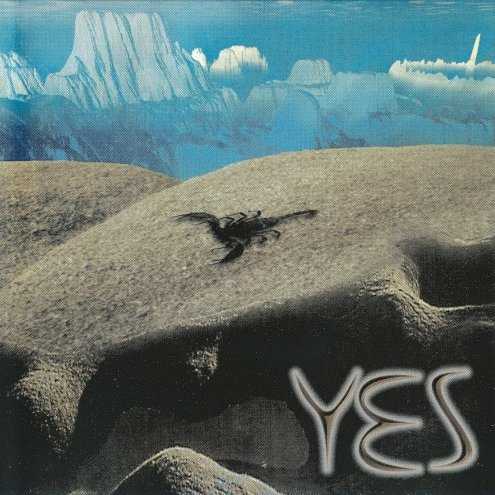 | Album: 33 of 47 Title: Sweet Dreams Released: 2003-02-18 Tracks: 12 Duration: 59:13 Scroll: Up Down Top Bottom 25% 50% 75% AlbumCover | 1 Something’s Coming (07:38) 2 Each and Everyday (05:12) 3 Sweetness (04:14) 4 Dear Father (05:33) 5 Every Little Thing (05:31) 6 Looking Around (03:40) 7 Sweet Dreams (03:26) 8 Then (04:19) 9 No Opportunity Necessary, No Experience Required (04:16) 10 Astral Traveller (05:38) 11 For Everyone (04:14) 12 Beyond and Before (05:26) |
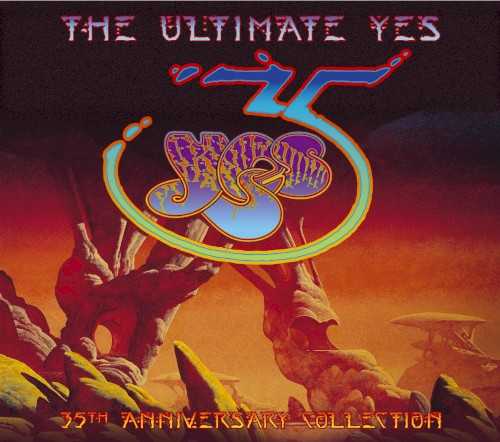 | Album: 34 of 47 Title: The Ultimate Yes: 35th Anniversary Collection Released: 2003-07-28 Tracks: 31 Duration: 2:58:59 Scroll: Up Down Top Bottom 25% 50% 75% Wikipedia AlbumCover | 1 Time and a Word (04:34) 2 Starship Trooper (09:29) 3 Yours Is No Disgrace (09:41) 4 I’ve Seen All Good People: a. Your Move b. All Good People (06:54) 5 Roundabout (08:34) 6 Long Distance Runaround (03:30) 7 Heart of the Sunrise (10:36) 8 South Side of the Sky (07:56) 9 And You and I (10:06) 10 America (single version) (04:12) 11 Wonderous Stories (03:49) 1 Siberian Khatru (08:56) 2 Soon (new edit) (05:45) 3 Going for the One (05:32) 4 Don’t Kill the Whale (03:56) 5 Tempus Fugit (05:17) 6 Owner of a Lonely Heart (04:27) 7 Leave It (04:13) 8 It Can Happen (single edit) (04:18) 9 Rhythm of Love (04:52) 10 Big Generator (remix) (03:40) 11 Lift Me Up (06:30) 12 The Calling (single edit) (04:39) 13 Open Your Eyes (05:14) 14 Homeworld (The Ladder) (radio edit) (04:40) 15 Magnification (07:17) 1 Roundabout (acoustic) (04:18) 2 Show Me (03:38) 3 South Side of the Sky (acoustic) (04:28) 4 Australia (solo acoustic) (04:12) 5 New World Symphony (03:33) |
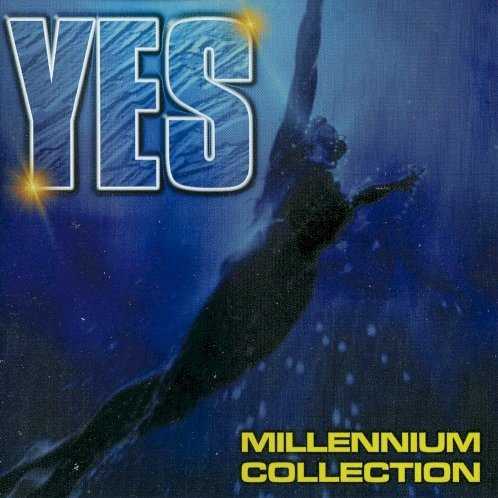 | Album: 35 of 47 Title: Millennium Collection Released: 2004 Tracks: 8 Duration: 39:36 Scroll: Up Down Top Bottom 25% 50% 75% Allmusic AlbumCover | 1 Something’s Coming (07:38) 2 Everydays (05:11) 3 Sweetness (04:13) 4 Dear Father (05:34) 5 Every Little Thing (05:31) 6 Looking Around (03:40) 7 Sweet Dreams (03:26) 8 Then (04:19) |
 | Album: 36 of 47 Title: Owner of a Lonely Heart Released: 2004 Tracks: 18 Duration: 2:00:40 Scroll: Up Down Top Bottom 25% 50% 75% Spotify Allmusic AlbumCover | 1 Owner of a Lonely Heart (06:00) 2 Magic Love (03:46) 3 Days of Wonder (05:00) 4 Merlin the Magician (06:46) 5 Time Is Time (02:08) 6 Sad Eyed Lady of the Lowlands (11:52) 7 Nine Voices (03:21) 8 Long Distance Runaround (03:26) 9 Roundabout (07:40) 1 Yours Is No Disgrace (13:00) 2 One of a Kind Parts 1 & 2 (06:28) 3 Face to Face (05:32) 4 And You and I (08:48) 5 Created by Clive (02:28) 6 Faithfully (04:07) 7 Open Your Eyes (05:14) 8 Dream River (03:58) 9 Journey to the Center of the Earth (21:04) |
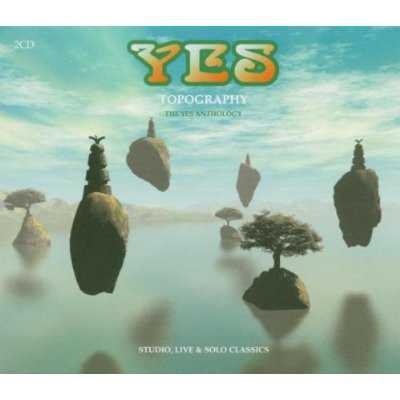 | Album: 37 of 47 Title: Topography: The Yes Anthology Released: 2004-04-12 Tracks: 14 Duration: 2:27:59 Scroll: Up Down Top Bottom 25% 50% 75% Allmusic AlbumCover | 1 Open Your Eyes (05:16) 2 Yours Is No Disgrace (13:00) 3 Your Move / Ive Seen All Good People (live) (07:26) 4 Homeworld (The Ladder) (09:33) 5 Close to the Edge (live) (19:43) 6 And You and I (live) (11:19) 7 Excerpts From Tales From Topographic Oceans (09:08) 1 Gates of Delerium (live) (23:11) 2 To Be Over (06:11) 3 Awaken (live) (17:05) 4 Cinema (live) (01:58) 5 Owner of a Lonely Heart (live) (06:00) 6 In the Presence of a) Deeper b) Death of Ego c) The Beginner d) Turn Around and Remember (10:25) 7 Roundabout (live) (07:43) |
| Topography: The Yes Anthology : Allmusic album Review : Classic rock legends Yes are probably not even aware of this records existence. Despite the fancy-pants packaging and the extensive liner notes that seem to present Topography: The Yes Anthology as a peerless retrospective of a band whose music has become "a phenomenon of classical proportions," this collection contains nothing on it that represents the prog pioneers 70s heyday. What it does include are numerous post-Big Generator studio "hits" and live recordings of classics like "Awaken" and "And You and I," culled from recent Yes and Yes-related material. Theres a nice version of Relayers "To Be Over" from Steve Howes 2001 solo release Natural Timbre. But theres nothing new or rare here, so fanatics need not heed the junkies call. As usual, its the casual fan looking for a quick fix who will mistakenly pick up this exercise in deception instead of spending his or her well-earned money on a proper overview, such as Atcos Yesstory. | ||
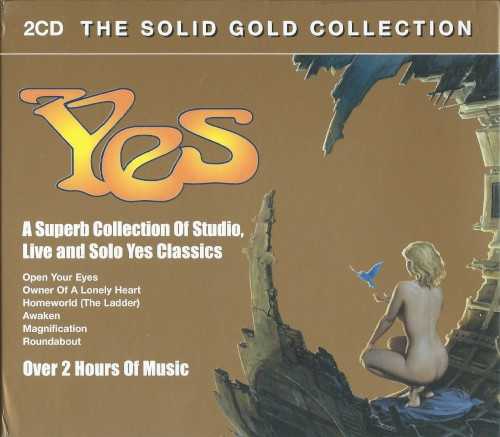 | Album: 38 of 47 Title: The Solid Gold Collection Released: 2005 Tracks: 16 Duration: 2:21:30 Scroll: Up Down Top Bottom 25% 50% 75% AlbumCover | 1 New State of Mind (06:01) 2 Open Your Eyes (05:15) 3 Universal Garden (06:18) 4 Perpetual Change (live) (10:38) 5 Your Move / I’ve Seen All Good People (live) (07:05) 6 And You and I (live) (11:07) 7 Owner of a Lonely Heart (live) (06:00) 8 Homeworld (The Ladder) (09:32) 9 It Will Be a Good Day (The River) (04:55) 10 Lightning Strikes (04:36) 1 Gates of Delirium (live) (22:59) 2 Magnification (07:17) 3 Don’t Go (04:28) 4 In the Presence Of (10:24) 5 Awaken (live) (17:09) 6 Roundabout (live) (07:41) |
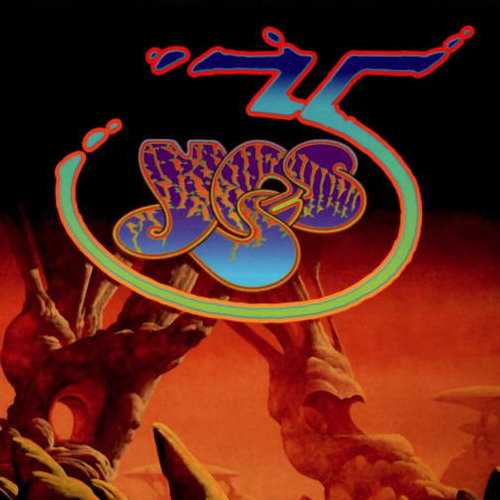 | Album: 39 of 47 Title: The Collection Released: 2005-03-08 Tracks: 16 Duration: 2:14:17 Scroll: Up Down Top Bottom 25% 50% 75% AlbumCover | 1 Owner of a Lonely Heart (05:54) 2 New Language (09:21) 3 Awaken (17:18) 4 Face to Face (05:03) 5 Give Love Each Day (07:46) 6 And You and I (11:03) 7 Dreamtime (10:45) 8 Finally (06:05) 1 Yours Is No Disgrace (12:51) 2 Universal Garden (06:18) 3 Magnification (07:17) 4 Homeworld (The Ladder) (09:32) 5 Your Move / Ive Seen All Good People (07:06) 6 The Messenger (05:12) 7 The Solution (05:27) 8 Roundabout (07:14) |
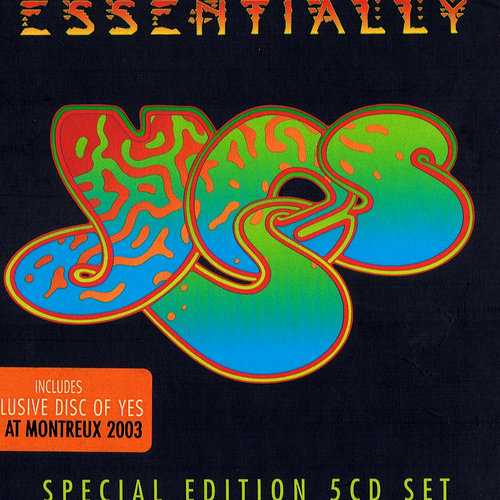 | Album: 40 of 47 Title: Essentially: Special Edition 5CD Set Released: 2006 Tracks: 48 Duration: 5:27:40 Scroll: Up Down Top Bottom 25% 50% 75% AlbumCover | 1 Homeworld (The Ladder) (09:34) 2 It Will Be a Good Day (The River) (04:53) 3 Lightning Strikes (04:35) 4 Can I? (01:31) 5 Face to Face (05:03) 6 If Only You Knew (05:42) 7 To Be Alive (Hep Yadda) (05:07) 8 Finally (06:01) 9 The Messenger (05:12) 10 New Language (09:19) 11 Nine Voices (Longwalker) (03:22) 1 The Calling (06:56) 2 I Am Waiting (07:25) 3 Real Love (08:49) 4 State of Play (05:00) 5 Walls (04:57) 6 Where Will You Be (06:09) 7 Endless Dream: a) Silent Spring b) Talk c) Endless Dream (15:44) 8 The Calling (special version) (08:08) 1 New State of Mind (06:00) 2 Open Your Eyes (05:14) 3 Universal Garden (06:16) 4 No Way We Can Lose (04:56) 5 Fortune Seller (05:01) 6 Man in the Moon (04:40) 7 Wonderlove (06:07) 8 From the Balcony (02:43) 9 Love Shine (04:38) 10 Somehow… Someday (04:46) 11 The Solution / [silence] / The Source (23:47) 1 Magnification (07:17) 2 Spirit of Survival (06:03) 3 Don’t Go (04:32) 4 Give Love Each Day (07:45) 5 Can You Imagine? (03:00) 6 We Agree (06:32) 7 Soft as a Dove (02:19) 8 Dreamtime (10:46) 9 In the Presence Of: i) Deeper ii) Death of Ego iii)True Beginner iv) Turn Around and Remember (10:25) 10 Time Is Time (02:08) 1 Siberian Khatru (10:00) 2 Magnification (06:52) 3 Don’t Kill the Whale (04:25) 4 In the Presence Of (10:44) 5 And You And I (10:42) 6 Awaken (19:16) 7 I’ve Seen All Good People (i) Your Move (03:36) 8 I’ve Seen All Good People (ii) All Good People (03:27) |
 | Album: 41 of 47 Title: Live and Solo Released: 2006-06-26 Tracks: 23 Duration: 3:02:33 Scroll: Up Down Top Bottom 25% 50% 75% AlbumCover | 1 Yours Is No Disgrace (12:23) 2 Magic Love (03:46) 3 Your Move (acoustic version) (03:29) 4 New State of Mind (06:00) 5 Long Distance Runaround (03:26) 6 Open Your Eyes (05:14) 7 Love Conquers All (04:51) 8 Awaken (17:08) 9 Catherine Howard (09:14) 1 Magnification (07:17) 2 Lonesome Trail (06:36) 3 I Believe (03:46) 4 Homeworld (The Ladder) (09:34) 5 Merlin the Magician (06:46) 6 Dancing Fool (03:51) 7 Roundabout (07:40) 1 Close to the Edge (19:21) 2 Owner of a Lonely Heart (03:33) 3 Going for the One (05:22) 4 To Be Alive (Hep Yadda) (05:07) 5 Well, Well, Well (04:04) 6 Cinema (02:00) 7 Journey to the Center of the Earth (31:56) |
 | Album: 42 of 47 Title: Yesstories Released: 2006-09-26 Tracks: 22 Duration: 2:31:51 Scroll: Up Down Top Bottom 25% 50% 75% AlbumCover | 1 Roundabout (07:14) 2 Sad Eyed Lady of the Lowlands (11:52) 3 Catherine Howard (09:14) 4 Open Your Eyes (05:14) 5 Red Light Ahead (05:47) 6 Perpetual Change (10:27) 7 I Feel Safe (03:46) 8 Tron Thomi (07:55) 9 Owner of a Lonely Heart (03:33) 10 Walk, Don’t Run (03:02) 11 It Will Be a Good Day (The River) (04:53) 1 Owner of a Lonely Heart (05:53) 2 Revealing Science of God (07:59) 3 The More You Know (03:44) 4 The Man in the Moon (04:42) 5 America (10:29) 6 Big Girls Don’t Cry (03:42) 7 And You and I (11:05) 8 Suddenly (10:10) 9 Merlin the Magician (06:46) 10 Violet Purple Rose (04:58) 11 New Language (09:19) |
 | Album: 43 of 47 Title: The Definitive Rock Collection Released: 2007 Tracks: 26 Duration: 2:38:48 Scroll: Up Down Top Bottom 25% 50% 75% Allmusic AlbumCover | 1 Time and a Word (04:33) 2 Starship Trooper (09:29) 3 Yours Is No Disgrace (09:41) 4 Ive Seen All Good People (06:56) 5 Roundabout (08:32) 6 Long Distance Runaround (03:33) 7 Heart of the Sunrise (10:37) 8 South Side of the Sky (07:56) 9 And You and I (10:08) 10 America (single version) (04:12) 11 Wonderous Stories (03:49) 1 Siberian Khatru (08:56) 2 Soon (new edit) (05:45) 3 Going for the One (05:31) 4 Don’t Kill the Whale (03:56) 5 Tempus Fugit (05:16) 6 Owner of a Lonely Heart (04:27) 7 Leave It (04:13) 8 It Can Happen (single edit) (04:18) 9 Rhythm of Love (04:52) 10 Big Generator (remix) (03:40) 11 Lift Me Up (06:30) 12 The Calling (single edit) (04:40) 13 Open Your Eyes (05:14) 14 Homeworld (The Ladder) (radio edit) (04:40) 15 Magnification (07:19) |
| The Definitive Rock Collection : Allmusic album Review : This double disc by Rhino includes 26 tracks from virtually all versions of Yes. While it rightly focuses on the bands singles and well-known album tracks from 1968 to 2001, it leaves off Yes celebrated -- and reviled -- excess from albums like Tales from Topographic Oceans (which needs to be experienced in full to either love it or hate it). Rhino cross-licensed much of the later material. While its true that there are many compilations out there, none of them go as far as this one in offering such a complete portrait of a band that has undergone many reunions and personnel changes. All the hits are here: theres a complete "Starship Trooper" and "Yours Is No Disgrace," the "Ive Seen All Good People" suite, "Roundabout," "Long Distance Runaround," the "And You and I" suite, and "Siberian Khatru." And more. That said, there is also "Going for the One," "Owner of a Lonely Heart," the single edits of "The Calling" and "Homeworld," and a new edit of "Soon" from Relayer. Put sound and content together and you have a truly definitive collection -- insofar as there can be one. Those who have been longtime fans may want this as a quick best-of. Newbies will dig this as a collection builder and a fantastic introduction to one of the bands that helped change the face of rock -- whether for better or worse will be your opinion. | ||
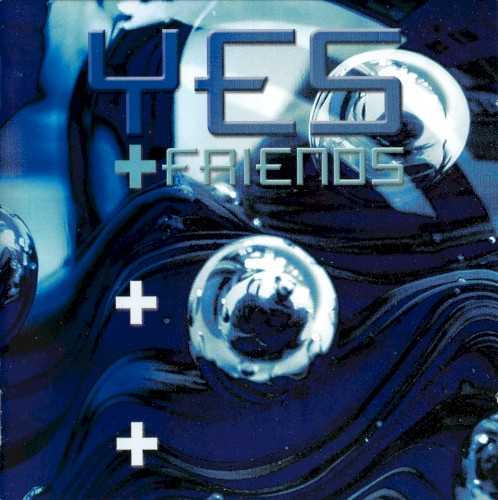 | Album: 44 of 47 Title: Yes + Friends Released: 2008-12-02 Tracks: 19 Duration: 1:56:17 Scroll: Up Down Top Bottom 25% 50% 75% Spotify AlbumCover | 1 Yours Is No Disgrace (13:00) 2 Merlin the Magician (06:46) 3 Well, Well, Well (04:04) 4 Watching the World (05:20) 5 Magnification (07:17) 6 Heaven’s Love (04:15) 7 Coming Home (05:36) 8 Lay, Lady, Lay (03:44) 9 Roundabout (07:40) 1 Lightning Strikes (04:49) 2 Pyramidology (03:06) 3 Catherine Howard (09:14) 4 Time Is Time (02:08) 5 Big Girls Don’t Cry (03:42) 6 Owner of a Lonely Heart (05:55) 7 I Feel Safe (03:46) 8 You’re the Reason (05:08) 9 One Too Many Mornings (03:32) 10 Awaken (17:08) |
 | Album: 45 of 47 Title: Fly From Here Released: 2011-07-01 Tracks: 11 Duration: 47:32 Scroll: Up Down Top Bottom 25% 50% 75% Allmusic Wikipedia AlbumCover | 1 Fly From Here: Overture (01:53) 2 Fly From Here, Part I: We Can Fly (06:00) 3 Fly From Here, Part II: Sad Night at the Airfield (06:41) 4 Fly From Here, Part III: Madman at the Screens (05:16) 5 Fly From Here, Part IV: Bumpy Ride (02:15) 6 Fly From Here, Part V: We Can Fly (reprise) (01:44) 7 The Man You Always Wanted Me to Be (05:07) 8 Life on a Film Set (05:01) 9 Hour of Need (03:07) 10 Solitaire (03:30) 11 Into the Storm (06:54) |
| Fly From Here : Allmusic album Review : A decade after their last studio release, Yes has issued Fly from Here, and its not only a keeper, but as good as any record to come from the group since 1974. Consisting here of Chris Squire (bass, vocals), Steve Howe (guitars, vocals), Alan White (drums), Geoff Downes (keyboards), and Benoit David (lead vocals), and with Trevor Horn producing, an obvious connection can be made between this album and 1980s Drama. But Fly from Here is a long way from that earlier album, even if the songs do possess a good deal of drama. Downright urgency is closer to it. Benoit David may not have Jon Andersons range, but he makes up for it with deep expressiveness; and that, coupled with virtuoso-level playing and wonderfully elegant mixing of the vocals, allows this album to stand alongside the groups best work of the last 35 years. Some of whats here will invite comparisons with their early years: the first six tracks are a six-part suite ("Fly from Here"), but its not essential to hear them linked. Astonishingly for a 2011 release, the group sounds as though theyre a bunch of kids again, inventing progressive rock for the first time, or perhaps perfecting it, complete with romantic ballads and folk-like pieces that stand in sharp contrast to the grander productions on which the album rests. Though nothing is overlong or complex, the songs are all presented with a depth and lushness that makes one think, at first, of a soundtrack to a movie, and then of the movie itself, as though Horn, Downes, and Squire (who, with Howe, dominate the composers credits) had a long-form, multi-media piece in mind rather than just an album. And they execute it all with a fullness of sound and compelling melodic content that pulls the listener in, almost as surely as any first-rate opera; and with Howes mostly instrumental contributions to break up the majestic production of Horns songs, this album does, at times, remind one of the best moments of Tales from Topographic Oceans. Lyrics like "Dreaming, seeing you there" lofting gently over thin, silky sheets of sound, can sweep the listener away, and thats only one of the moments where the groups unique elements take hold. Fans of Howes playing will also not be disappointed: his electric guitars are represented in complex, intense layers, but his acoustic work isnt shorted, providing quietly gorgeous openings to about a third of the material here. His "Hour of Need" is the most genial acoustic ballad that this group has delivered since "Your Move" on The Yes Album, 40 years ago. Its followed by "Solitaire," possibly the finest solo guitar piece we may ever hear from Howe on a Yes album. And it all closes with the rollicking "Into the Storm," all electric and all cylinders pumping, and, ironically, the least interesting track on the album. | ||
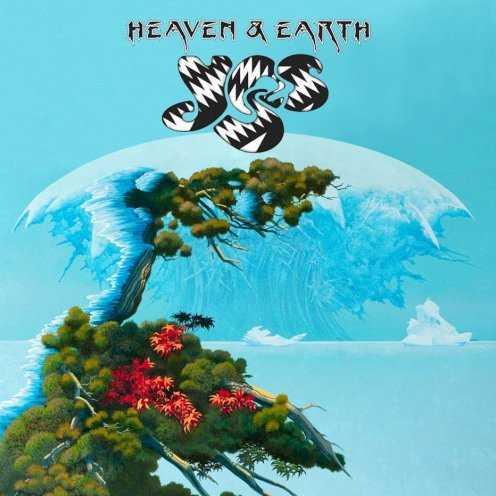 | Album: 46 of 47 Title: Heaven & Earth Released: 2014-07-16 Tracks: 8 Duration: 51:27 Scroll: Up Down Top Bottom 25% 50% 75% Spotify Wikipedia Allmusic AlbumCover | 1 Believe Again (08:02) 2 The Game (06:51) 3 Step Beyond (05:34) 4 To Ascend (04:43) 5 In a World of Our Own (05:20) 6 Light of the Ages (07:41) 7 It Was All We Knew (04:13) 8 Subway Walls (09:03) |
| Heaven & Earth : Allmusic album Review : The first time Yes worked with producer Roy Thomas Baker was on 1979s ill-fated "Paris Sessions," a group of recordings that was aborted when Jon Anderson and Rick Wakeman temporarily left the band. Different versions of some of the songs ended up on 1980s Drama, produced by Trevor Horn, while others appeared on various members solo records. Heaven & Earth is Yes first new recording since 2010s surprisingly good Fly from Here, helmed by Horn. Singer Benoit David, who replaced an ailing Anderson, has himself been displaced by Glass Hammer frontman Jon Davison. At least initially, the latters voice is nearly a dead ringer for Andersons. Listening to Heaven & Earth makes one wonder about what happened to the spirited playing and vigor of rediscovery displayed on Fly from Here. This is as far from prog rock as Yes has traveled; its even further afield than the pop experiments on Talk or The Ladder. With Baker at the helm, what transpires is a slick, edgeless, badly executed attempt at adult-oriented pop, and for that, you need real hooks, and none exist here. Alan Whites drums are almost exclusively used merely as rhythm tracks; their mix is ribbon thin. Chris Squires fat, distorted, roiling bass, which has been a guiding signature of the bands sound since inception, is reined in so much it is nearly generic. Steve Howes use of volume pedals and cross-channel shifting -- even in his fills -- shows little of his inventive playing acumen. Geoff Downes keyboards are so soft, decorative, and "pretty," they displace whatever energy the arrangements might have called for. There are a few places where Yes does come across as something resembling its former self: the musical architecture in the (first) bridge in "Step Beyond," the brief crescendo-building in the middle section of "Light of the Ages," and in the longest and final track, "Subway Walls." On the latter, after a sleepy two-minute keyboard intro, Squires bass reclaims some of its authority and drives Whites syncopated beats as well as enjoyable head-to-head interplay between Howe and Downes engaging in knotty twists and turns, resulting in solid organ and guitar solos. But one track does not an album make. This set makes one yearn for (some of) the prog excesses of old; Heaven & Earth is the most creatively challenged and energetically listless record in Yes catalog. | ||
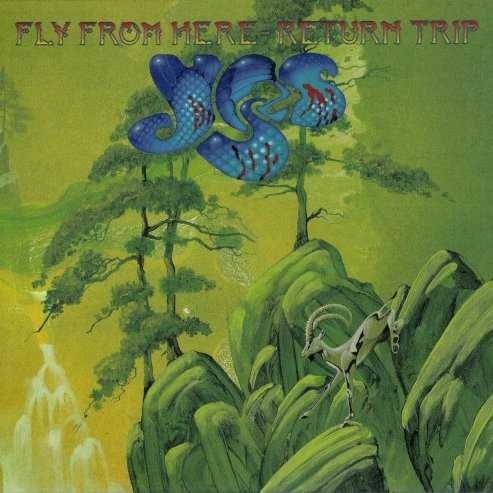 | Album: 47 of 47 Title: Fly From Here: Return Trip Released: 2018-03-25 Tracks: 12 Duration: 53:18 Scroll: Up Down Top Bottom 25% 50% 75% AlbumCover | 1 Fly From Here: Overture (01:52) 2 Fly From Here, Pt I: We Can Fly (05:04) 3 Fly From Here, Pt II: Sad Night at the Airfield (05:25) 4 Fly From Here, Pt III: Madman at the Screens (04:35) 5 Fly From Here, Pt IV: Bumpy Ride (02:16) 6 Fly From Here, Pt V: We Can Fly Reprise (02:16) 7 The Man You Always Wanted Me to Be (05:19) 8 Life on a Film Set (05:04) 9 Hour of Need (06:44) 10 Solitaire (03:28) 11 Don’t Take No for an Answer (04:20) 12 Into the Storm (06:54) |